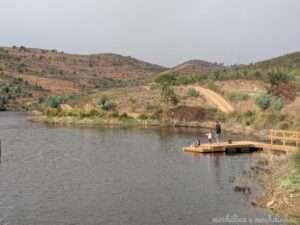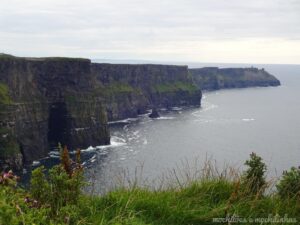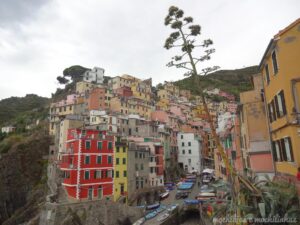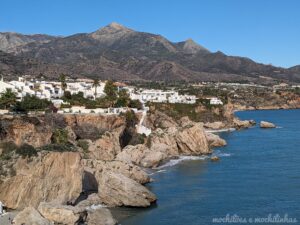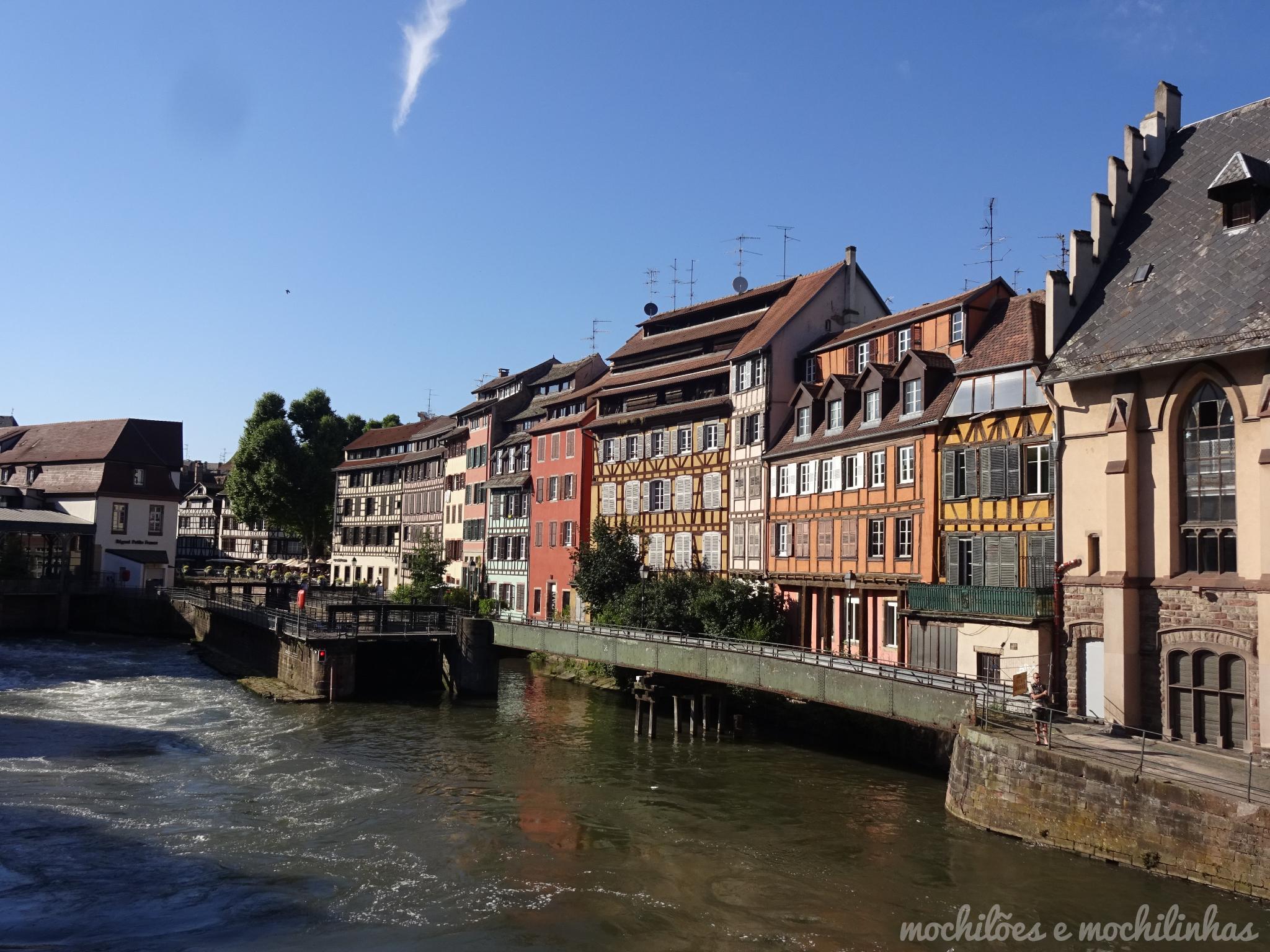Day 1 – Tuesday (07/05/2016)
We left from Dijon, capital of Burgundy, in the late afternoon – read about our trip there in this post – and we hit the road towards the region of Alsace.
A summary of the region
Alsace is a historic region in eastern France known for its picturesque medieval villages, renowned vineyards and half-timbered architecture. With a rich cultural heritage reflecting both French and German influences, Alsace is known for its production of white wines, such as Riesling and Gewürztraminer, and its traditional cuisine, including dishes such as choucroute garnie and tarte flambée.
The history of Alsace is marked by repeated territorial disputes between France and Germany. From the Thirty Years' War and the subsequent Treaty of Westphalia in 1648, to the Franco-Prussian Wars and both World Wars, the region changed hands several times. Annexation by Germany after the Franco-Prussian War and return to France after World War I, followed by German occupation in World War II and subsequent liberation, shaped Alsace's diverse cultural identity. Today, the region retains a strong bilingual and bicultural heritage, reflected in its architecture, cuisine and daily life.
Our first stop was in the village of Eguisheim, considered one of the most beautiful in France (see here the relationship with all).
Eguisheim
It looks like it came out of a fairy tale, just like many others in the region, and as it was the first one we saw, it was the one that caught our attention the most. We walked through the flower-filled streets and found some very large stork nests on top of the houses. They make a very loud noise and their wings are enormous!!! We spent some time admiring these beautiful and “magical” birds and I even thought about advancing the children’s plan, but Celo soon put an end to my plans.

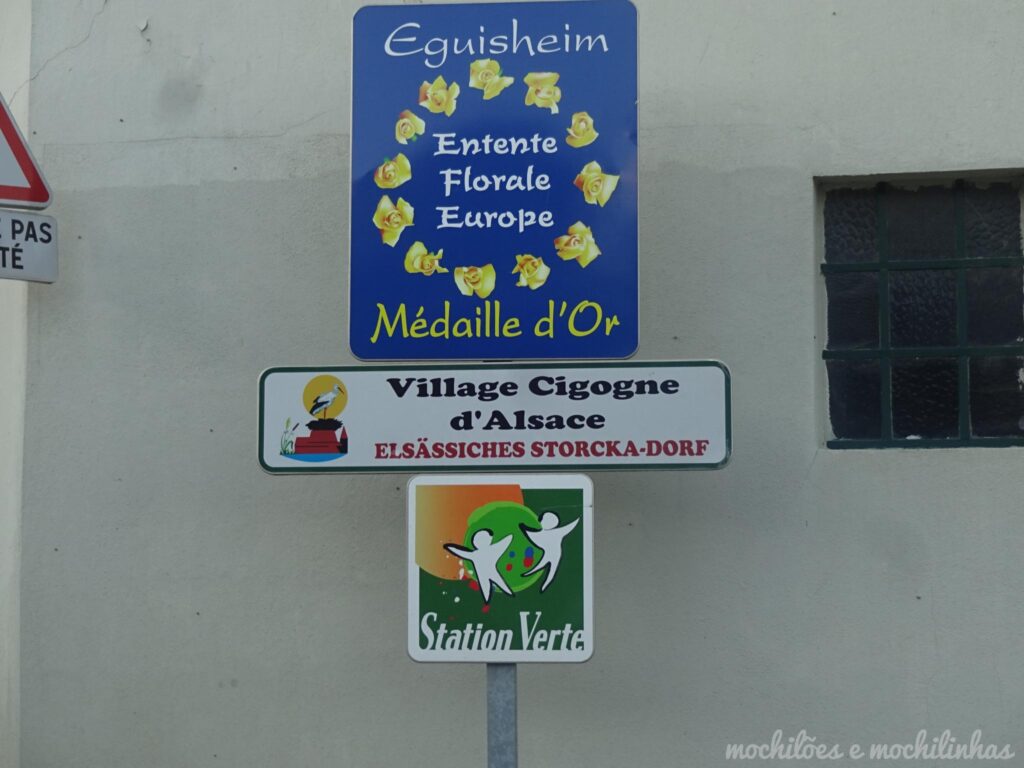
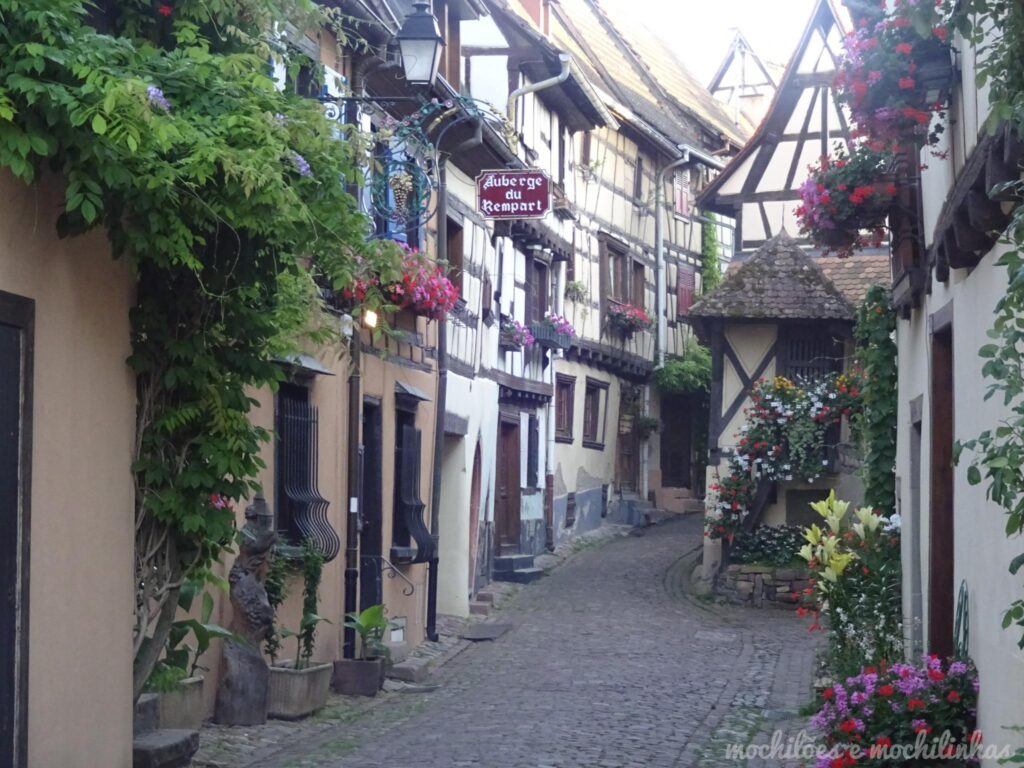
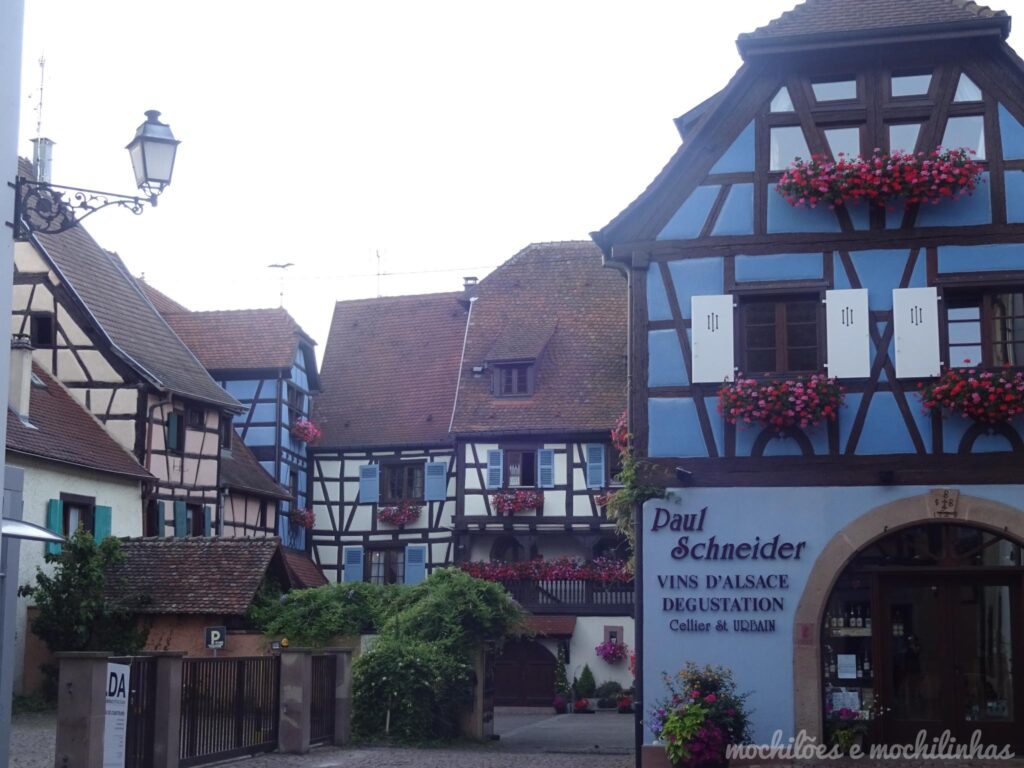


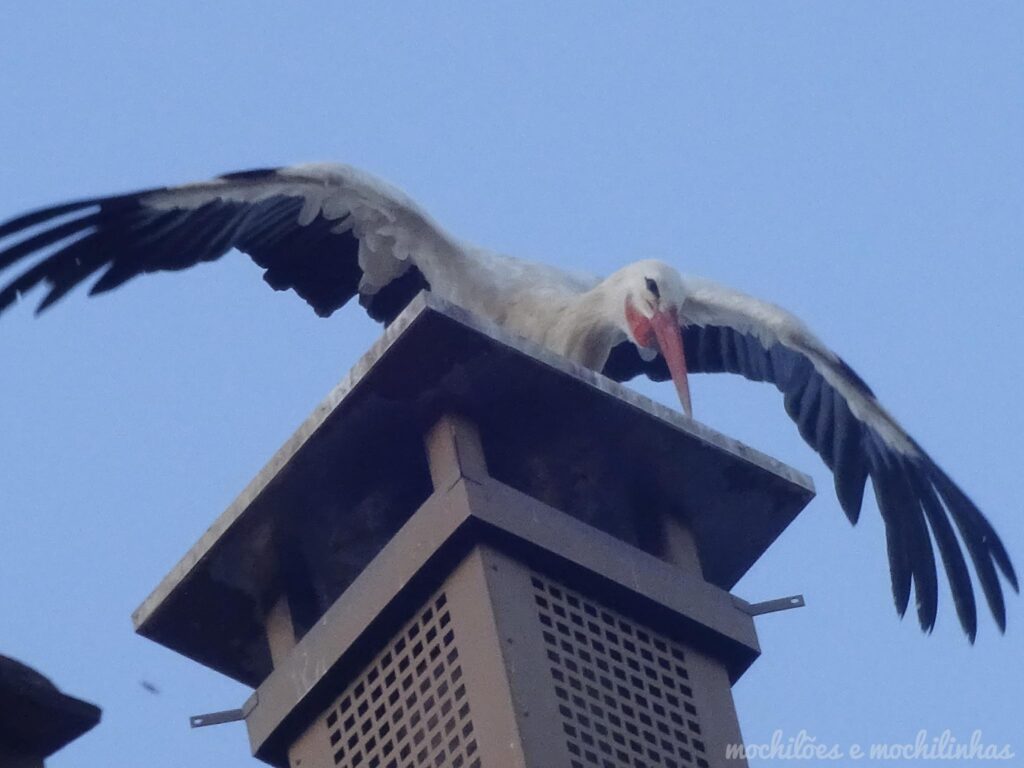
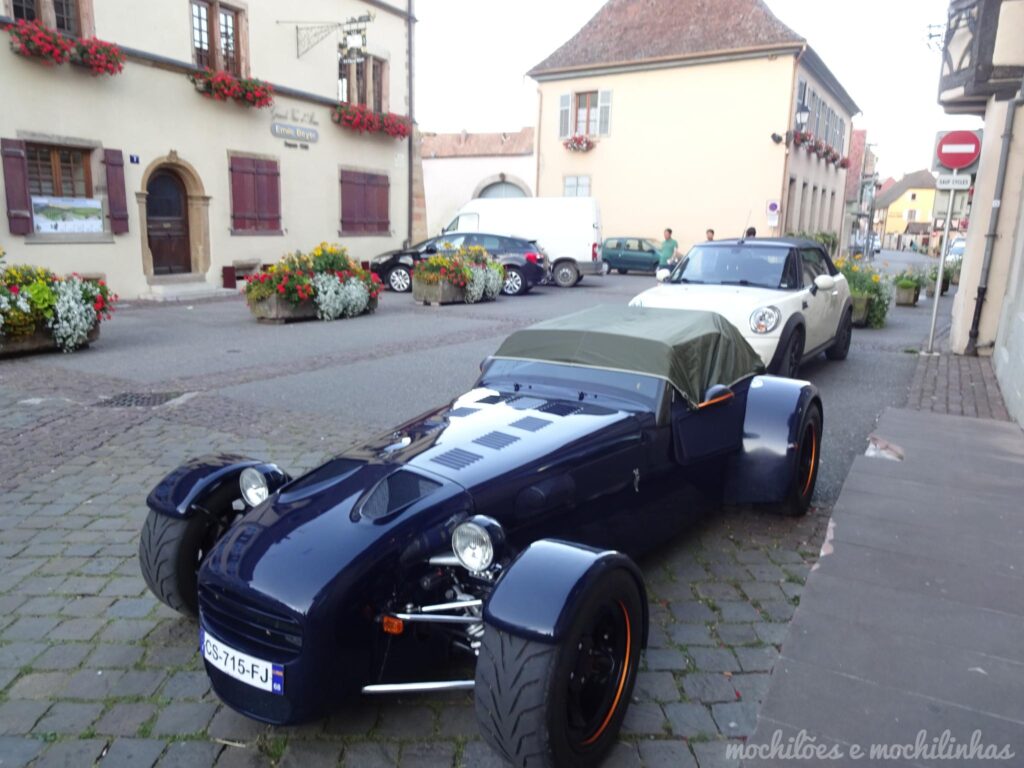

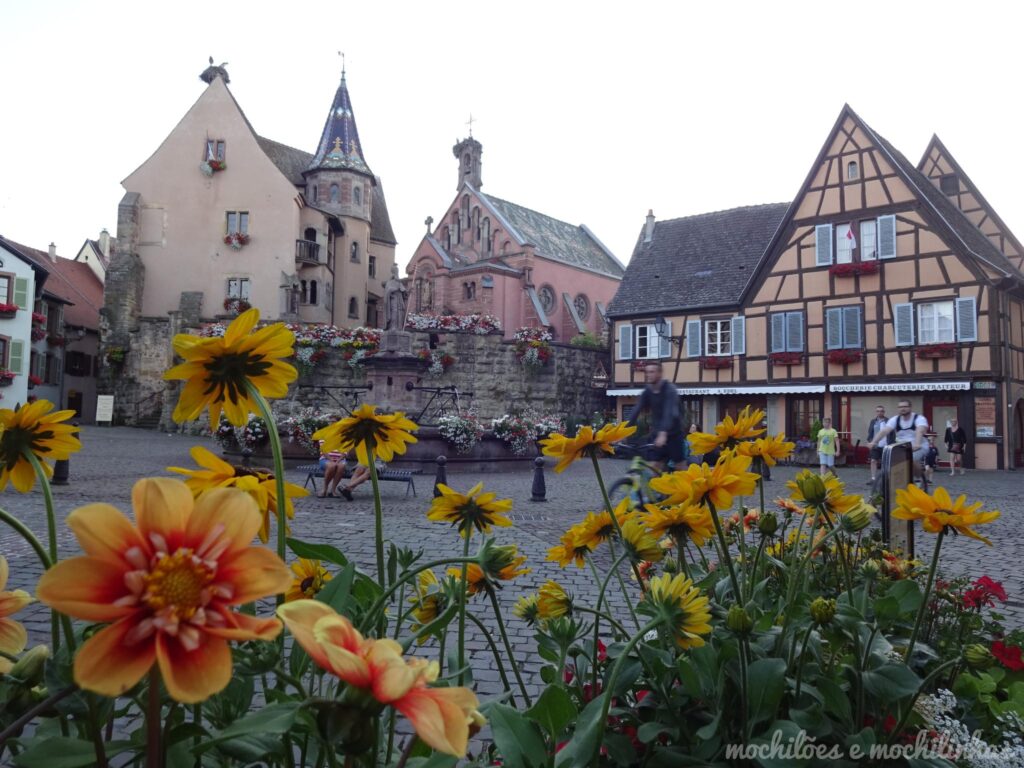
We chose to have dinner at the restaurant Auberge du Rempart, which had good reviews and only served typical dishes from the region. We chose two of them and unfortunately they were quite bland. I ordered a kind of pizza without tomato sauce and Celo ordered some sausages with bacon, which were also nothing special. The other dishes we chose were sauerkraut (a dish made with cabbage), something very typical in German cuisine. I already miss the food from Burgundy!
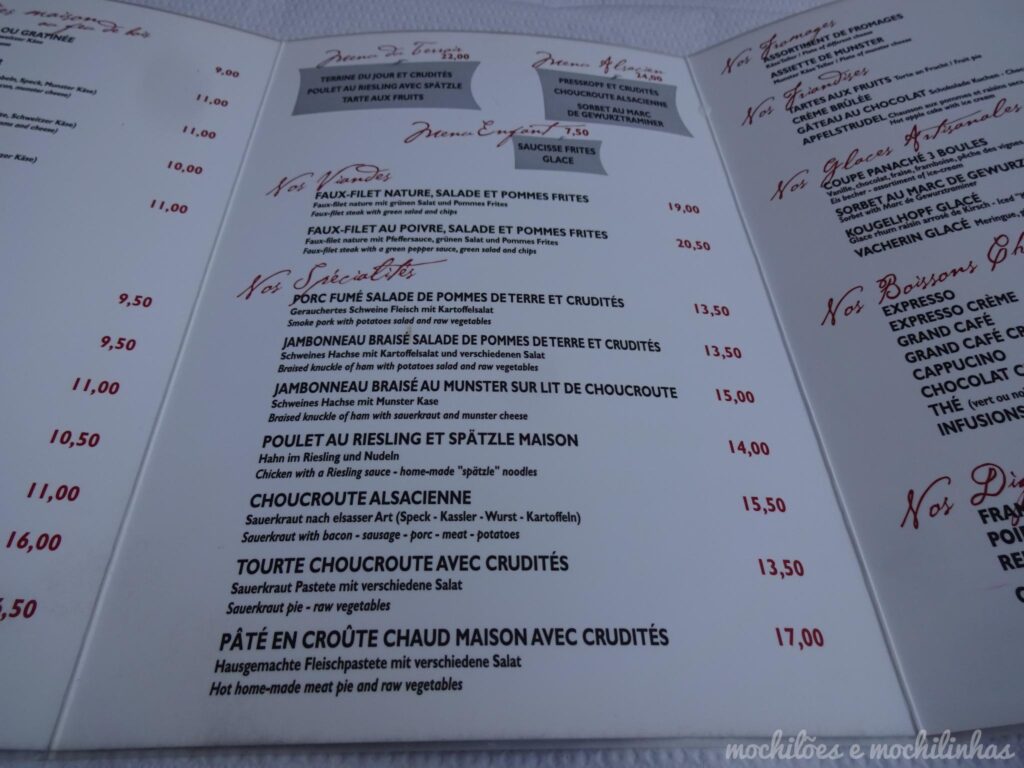
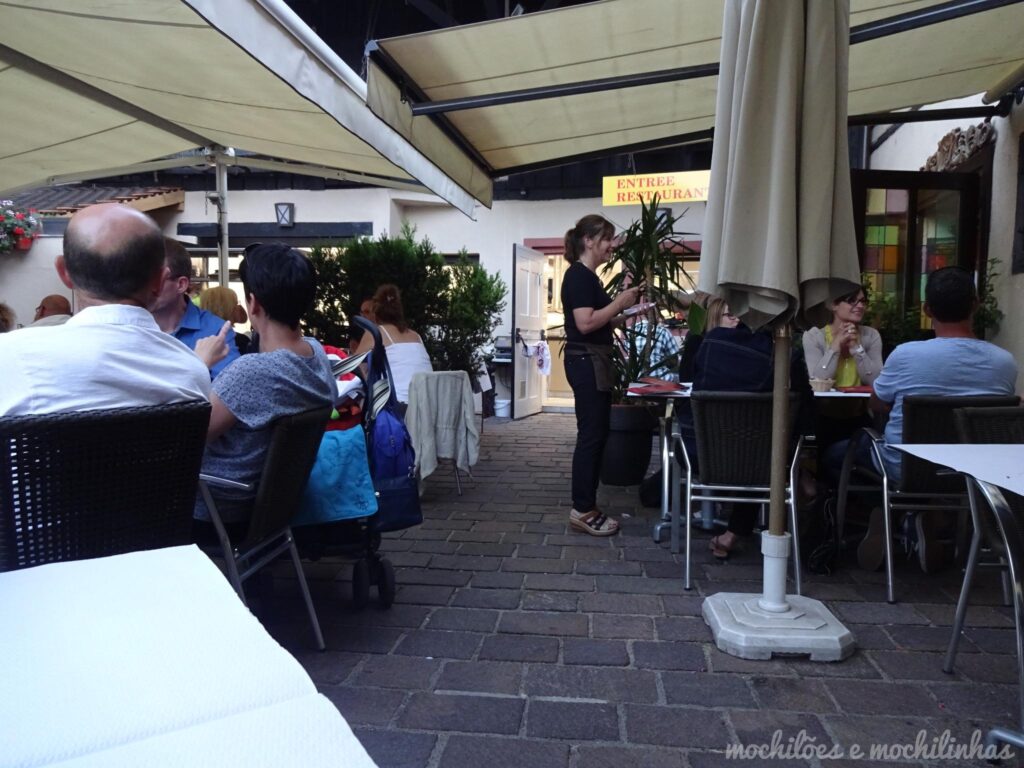

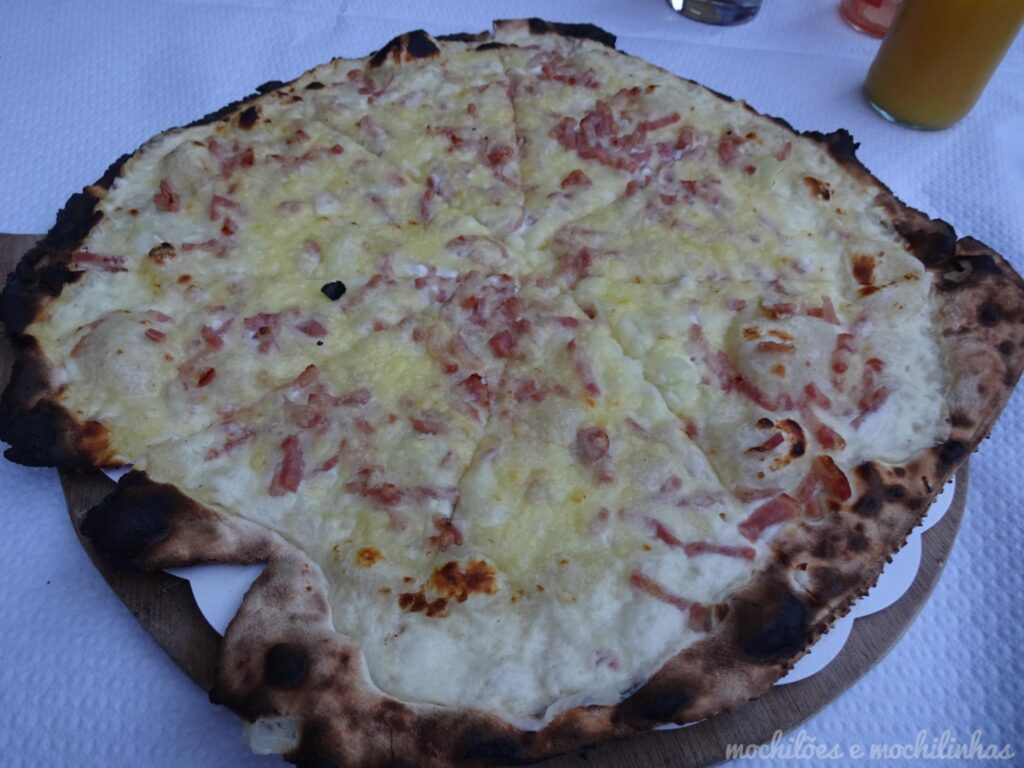
Sleeping in Colmar
We drove to the city of Colmar, because the hotel we chose to explore the region was there. We stayed at Hotel Roi Soleil Prestige (80 euros without breakfast), which has super modern and comfortable rooms (the toilet is separate from the shower!), but is located well outside the city center. The other options I had seen in the area were more expensive or didn't have parking or air conditioning, so this was the best value for money for us. To get to the center of Colmar, you have to go by car, but if you want to travel around Alsace at a leisurely pace, you should have a car, because the cutest villages are very small and don't have a train station. Some photos of our room:
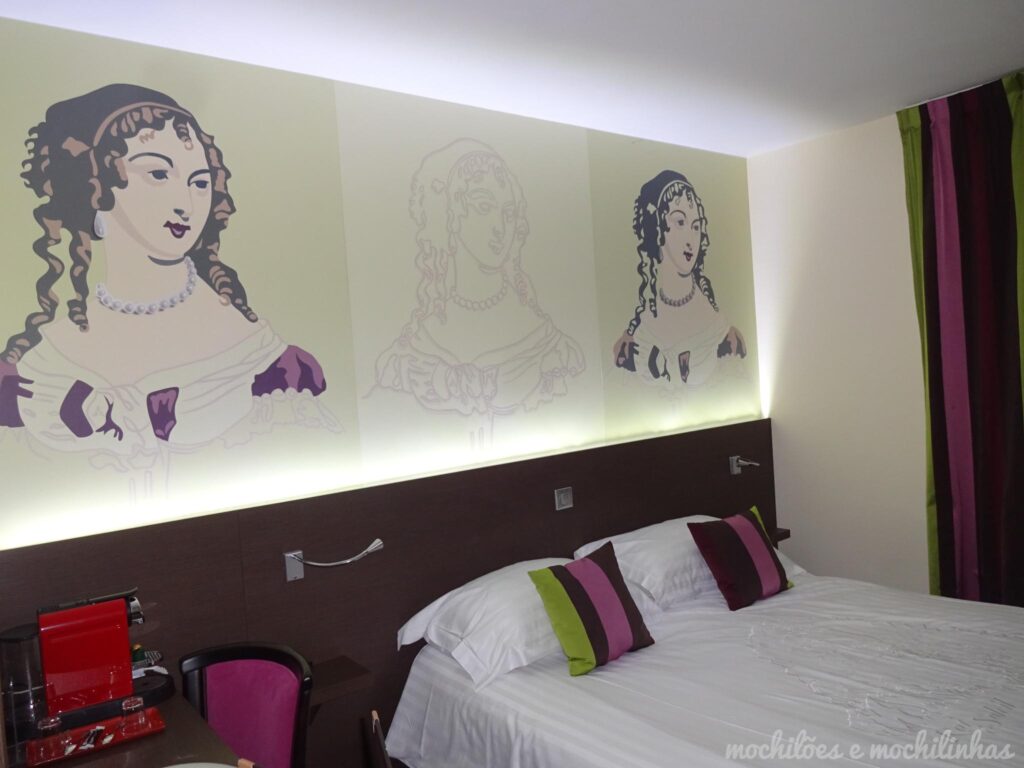

Day 2 – Wednesday (06/07/2016)
We ate our breakfast in the room and went out to see the cutest villages in the region, according to my guides and my mother-in-law. Our first stop was recommended by my mother-in-law: Lower Blackthorn.
Lower Blackthorn
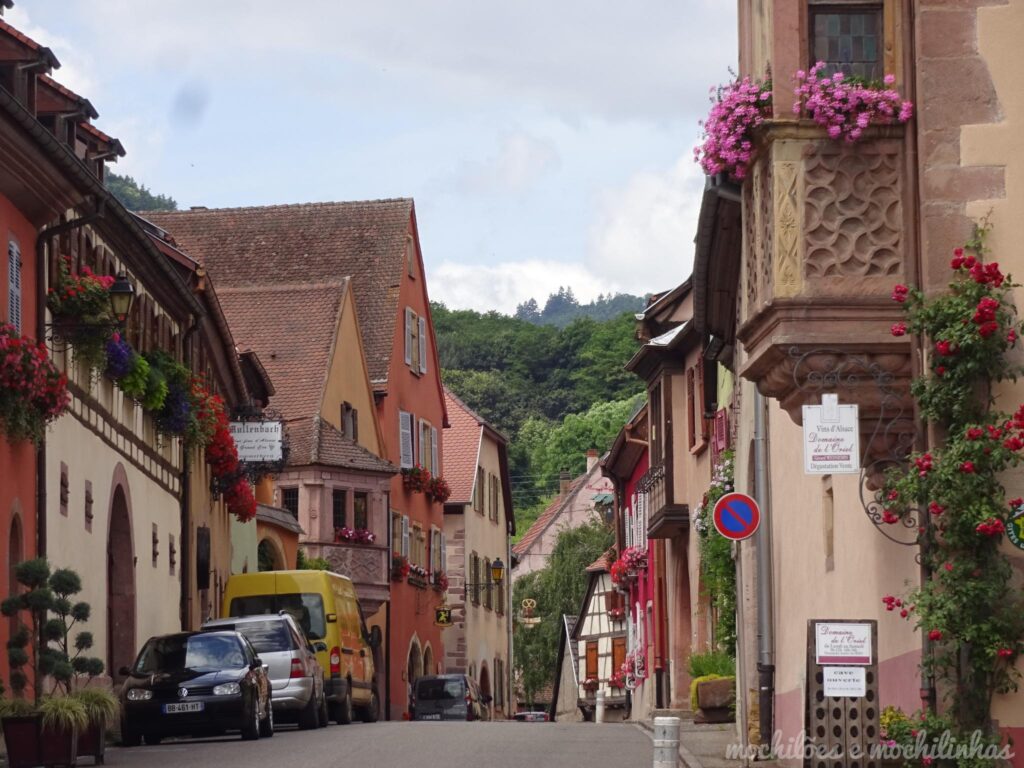
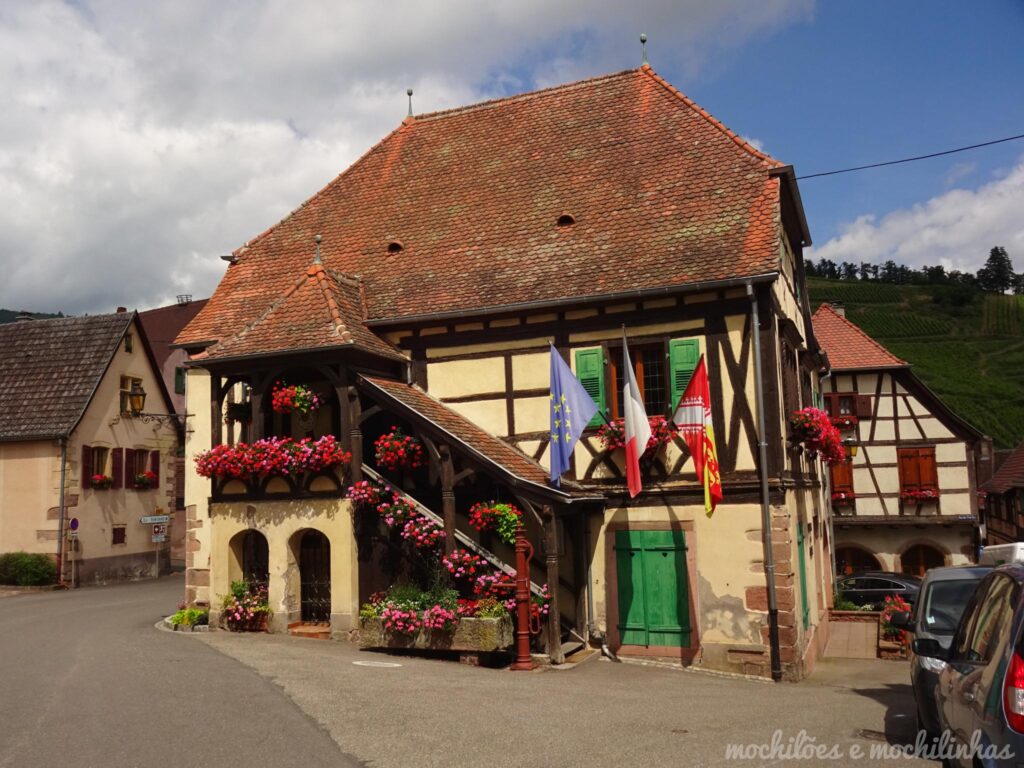
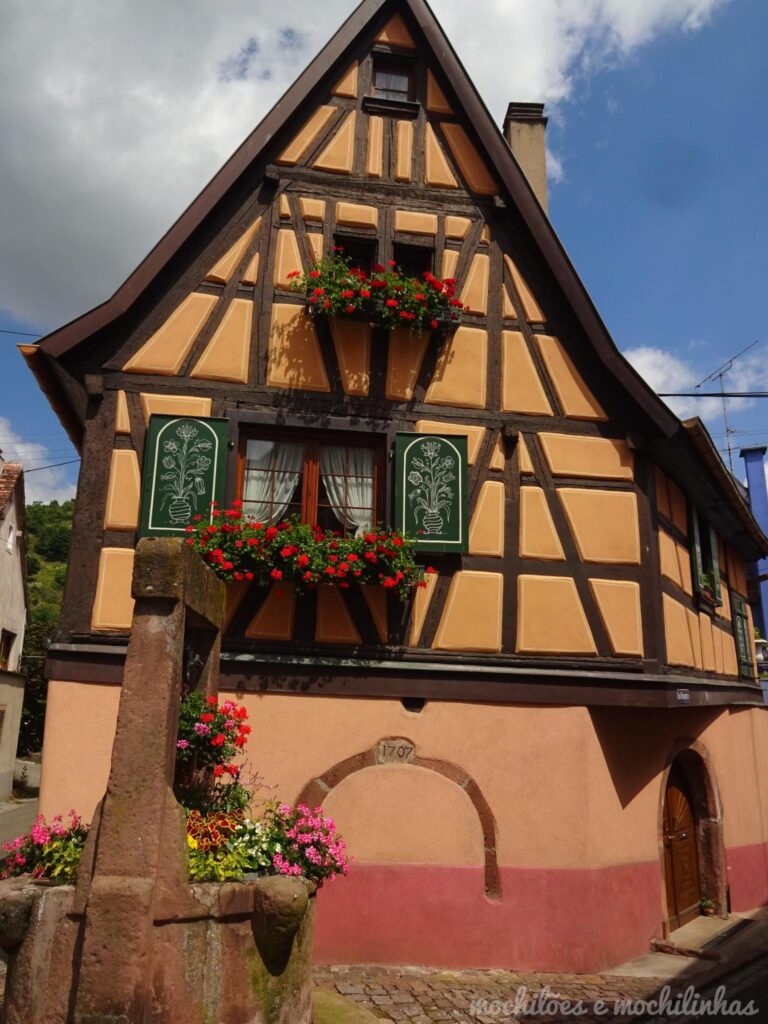
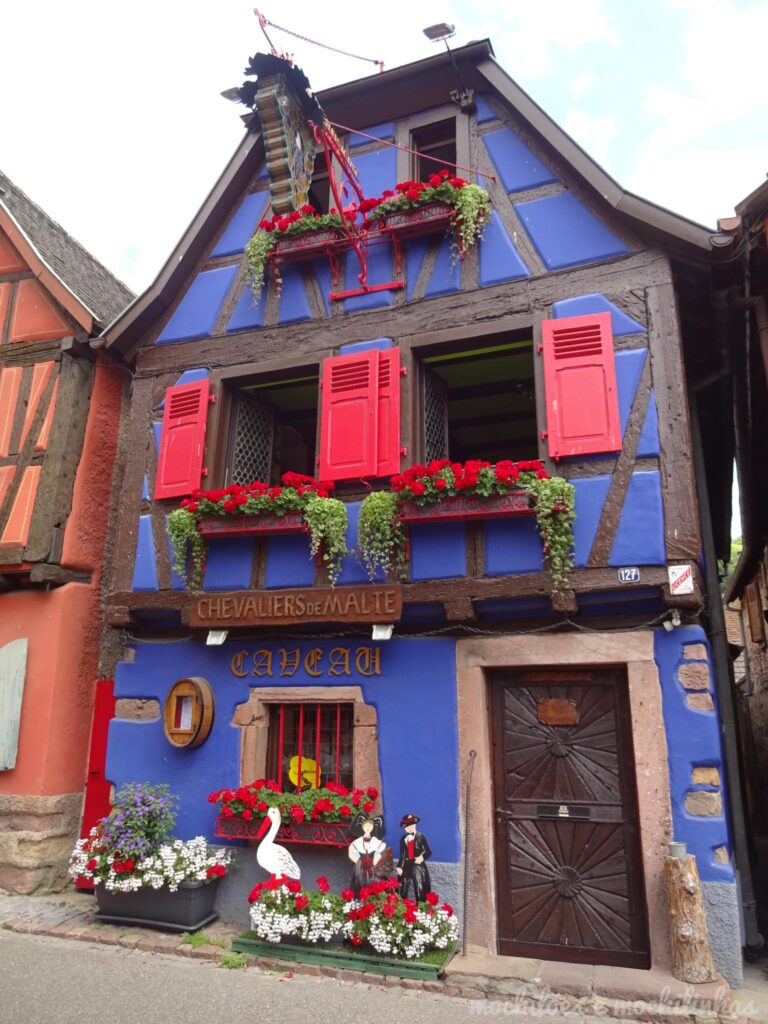


It is in this cute village that chef Christine Ferber prepares delicious homemade jams. We went to the store To the Three Episodes, we tried one with strawberry and another with orange, and we made sure to buy the strawberry one (5 euros per jar). Divine, really! It's worth the visit.
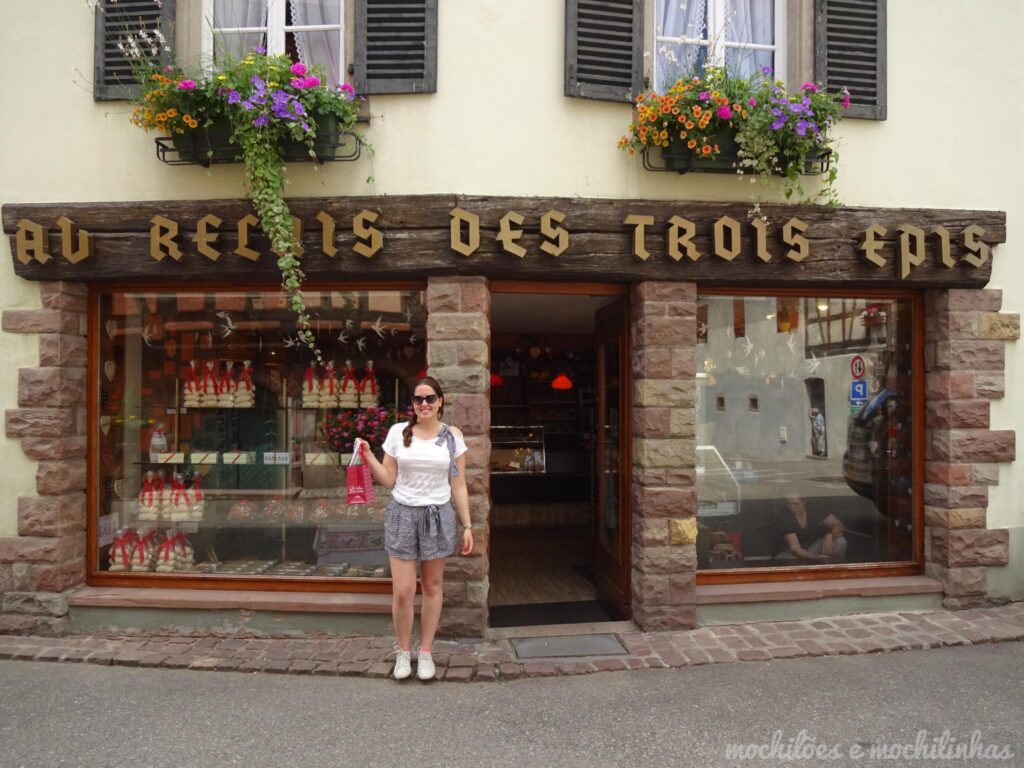
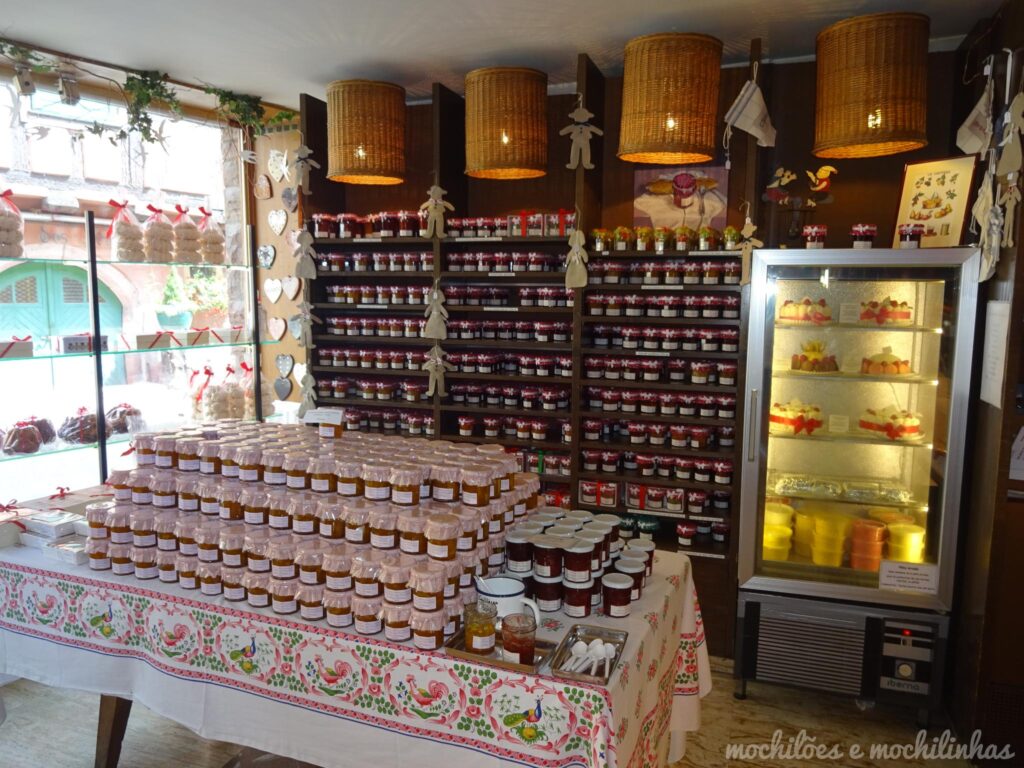
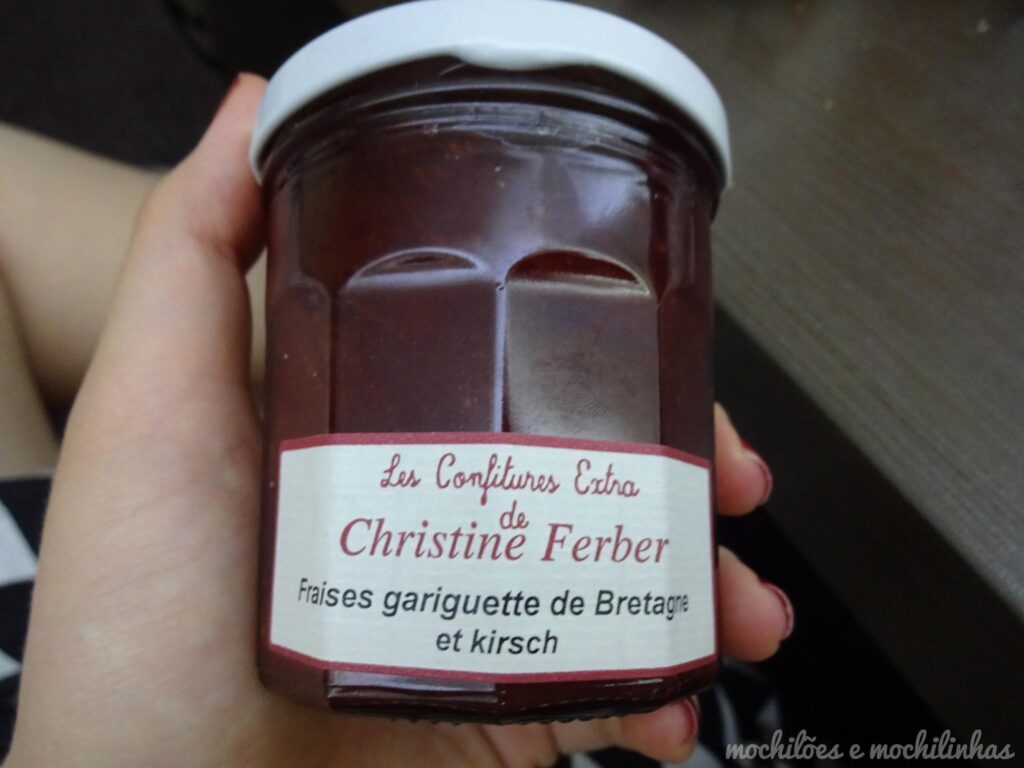
Kaysersberg
We then passed through the village of Kaysersberg, which has colorful, flowery little houses with a charming canal between them. This town is the twin of Lambaréné in Gabon due to links with Dr. Albert Schweitzer, who was born here in 1875 and spent most of his professional life in a hospital in West Africa.

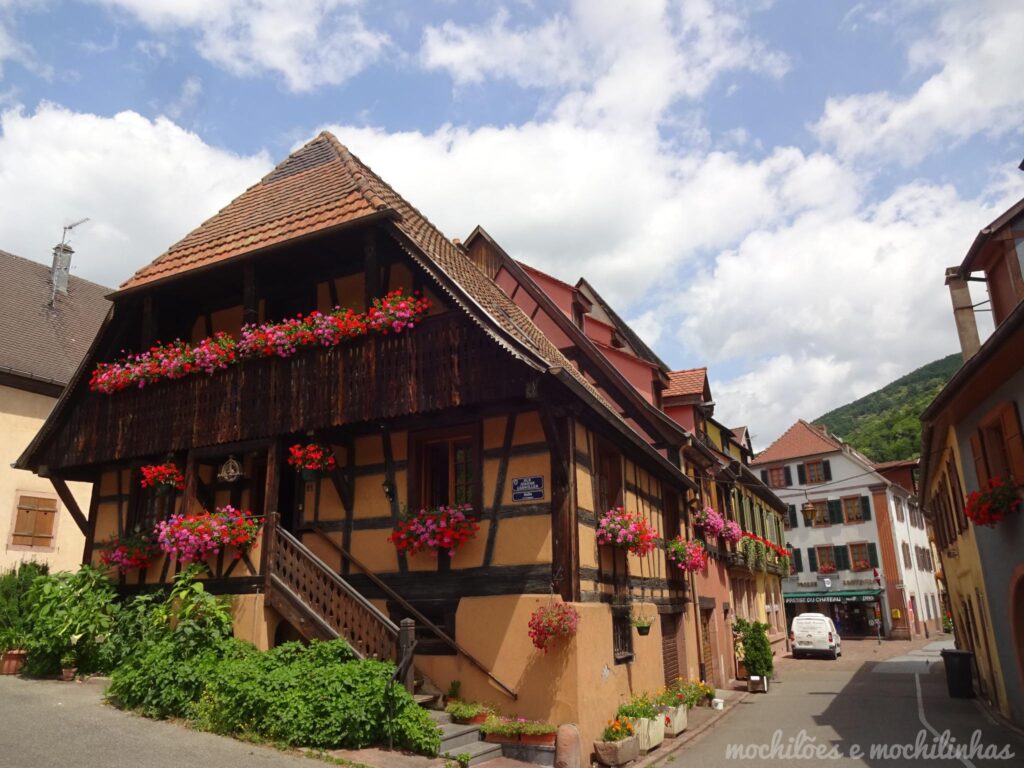
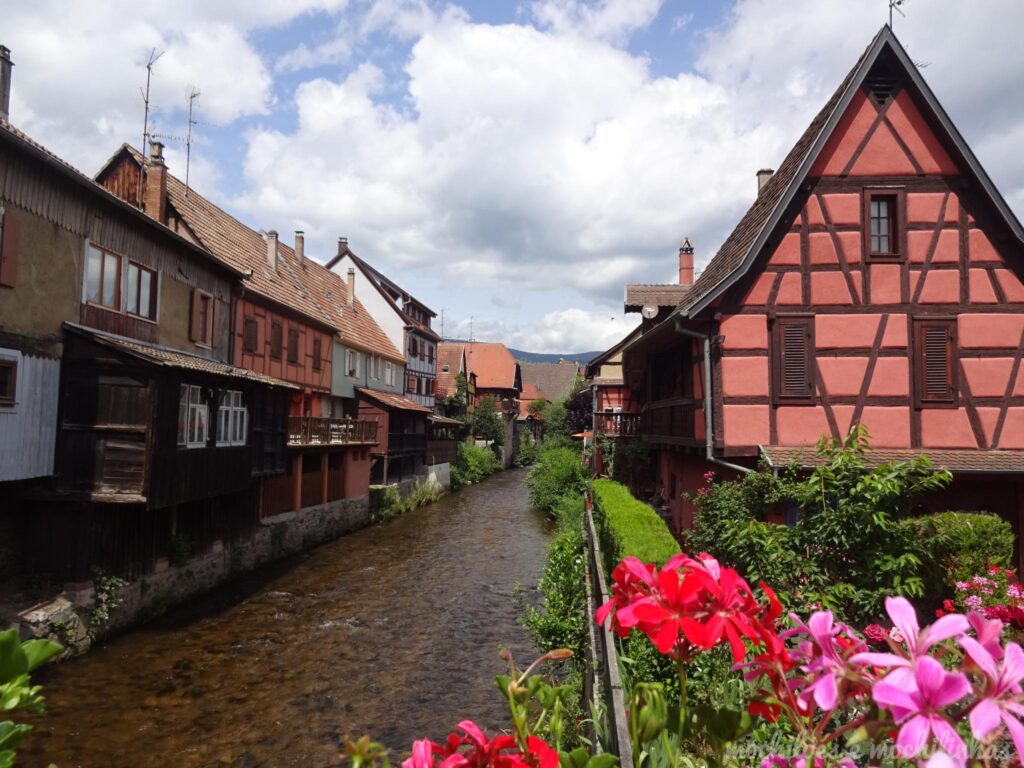
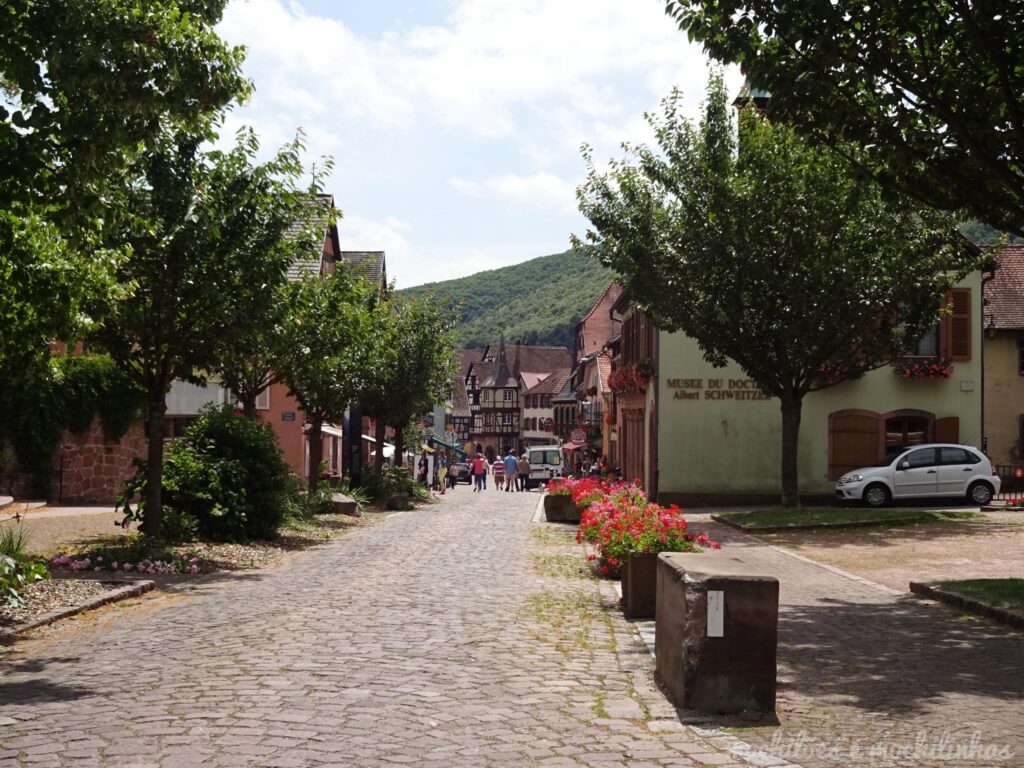
We were already thinking about lunch and so we headed to Riquewihr.
Riquewihr
This is one of the largest and most touristic villages in the region, with many traditional restaurants, many boutiques, souvenirs, medieval walls and towers and of course, many colorful houses and flower-filled streets. We parked in a paid parking lot outside the center and walked less than 5 minutes to the main street.
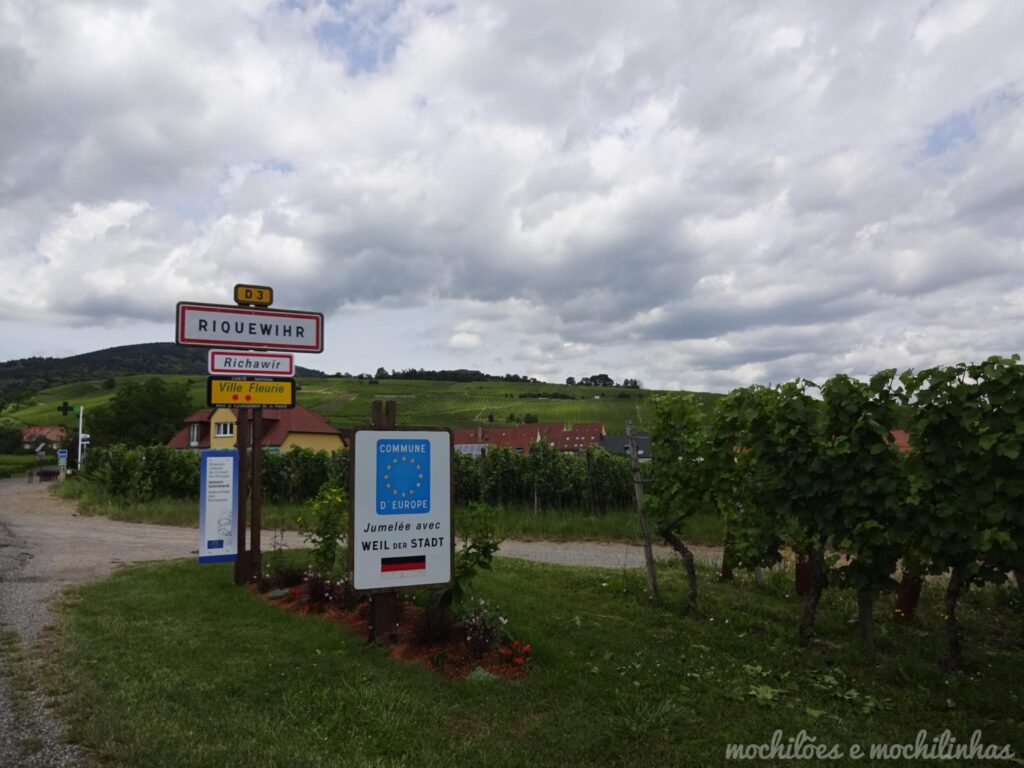
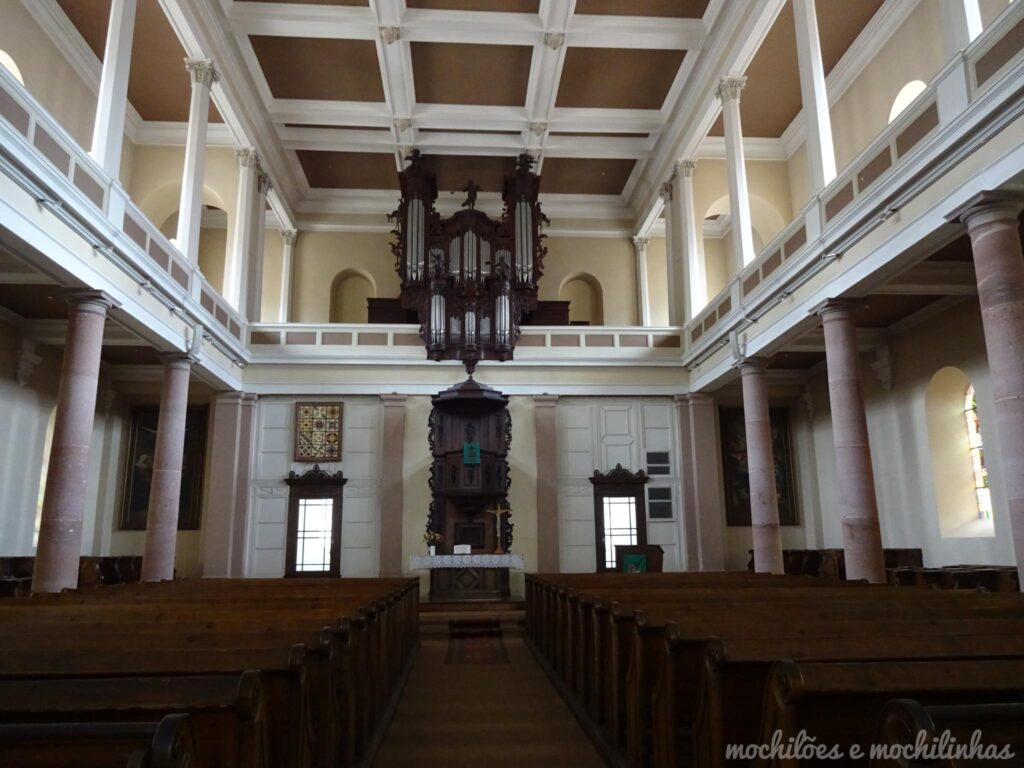
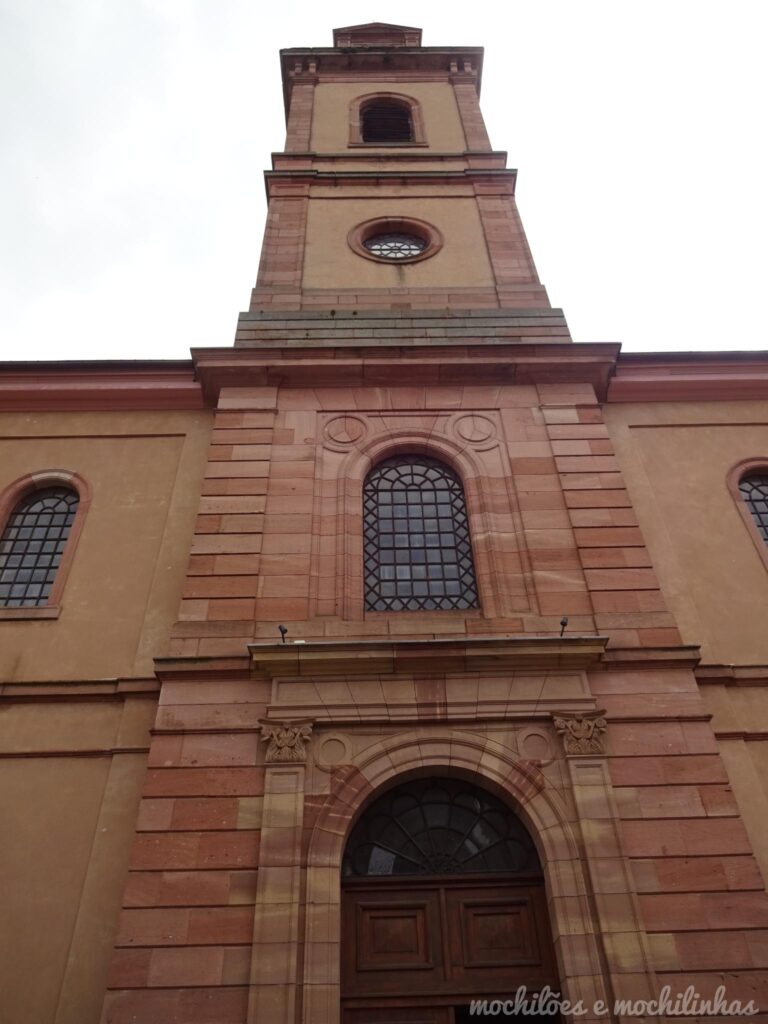
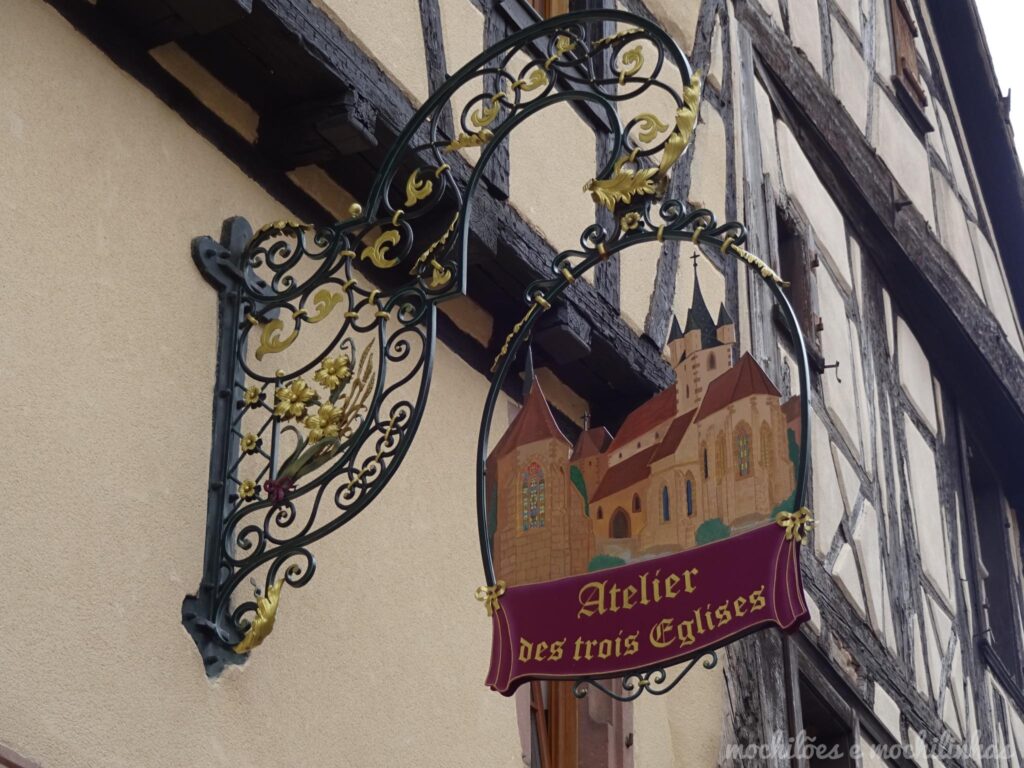
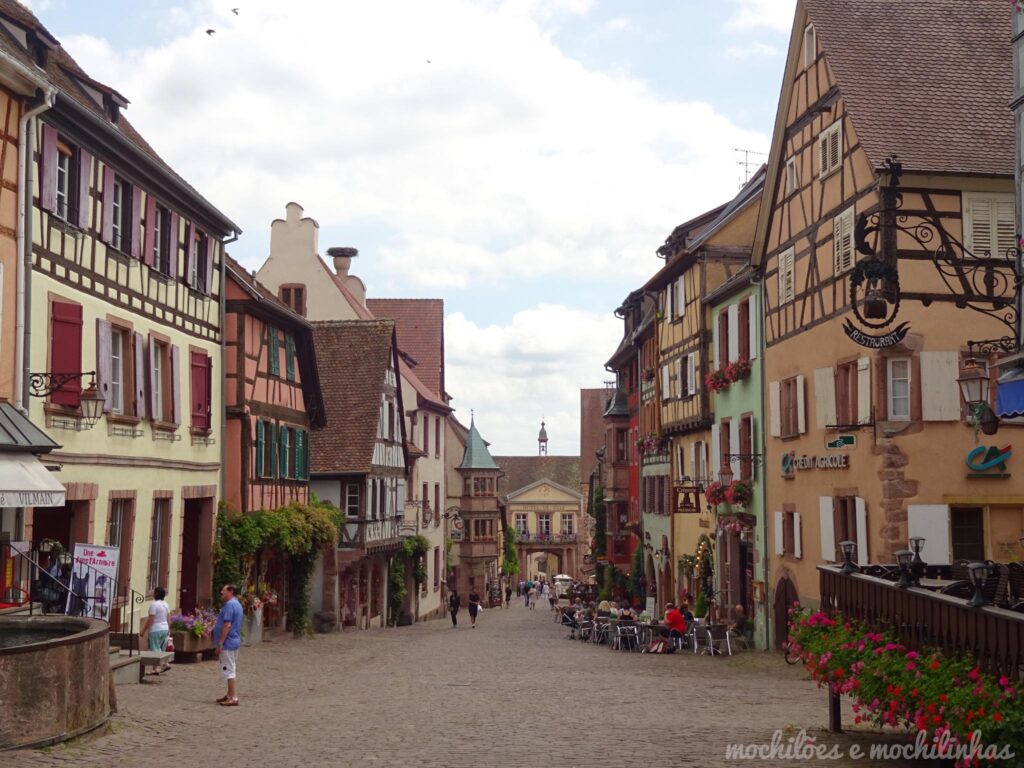

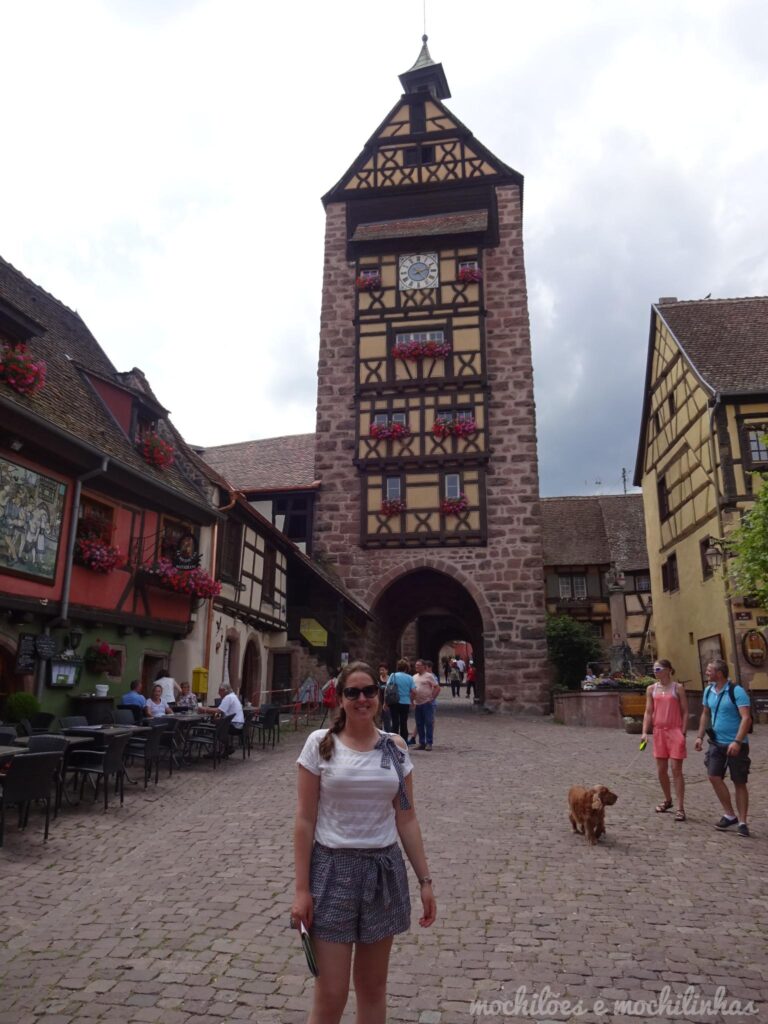
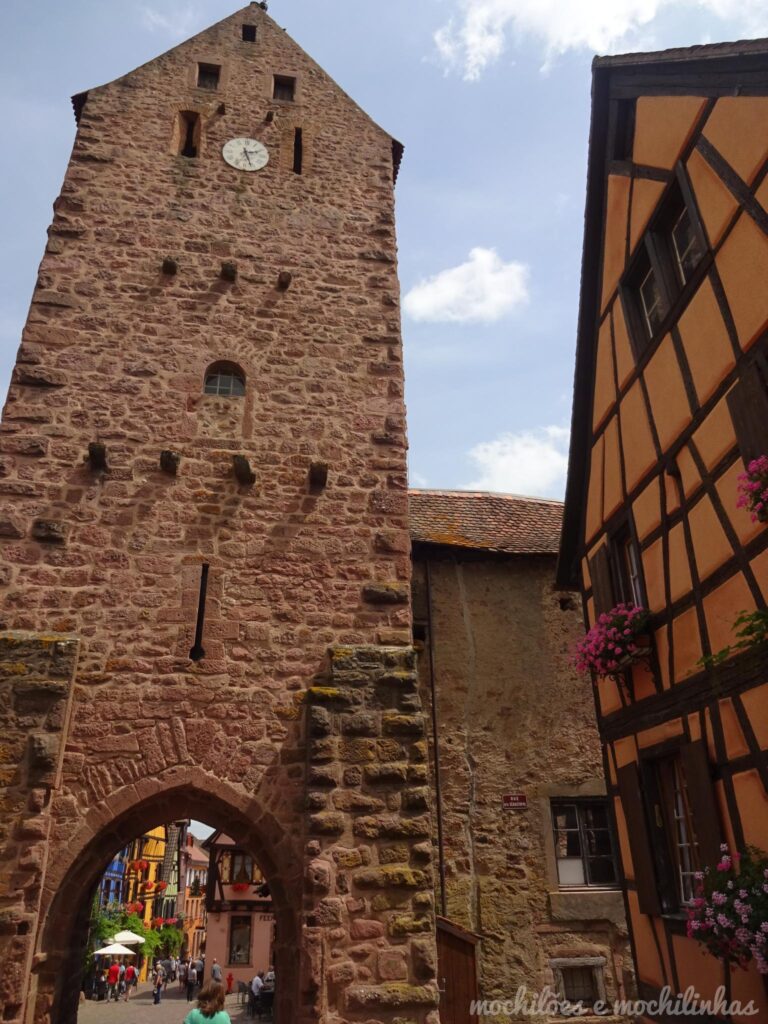
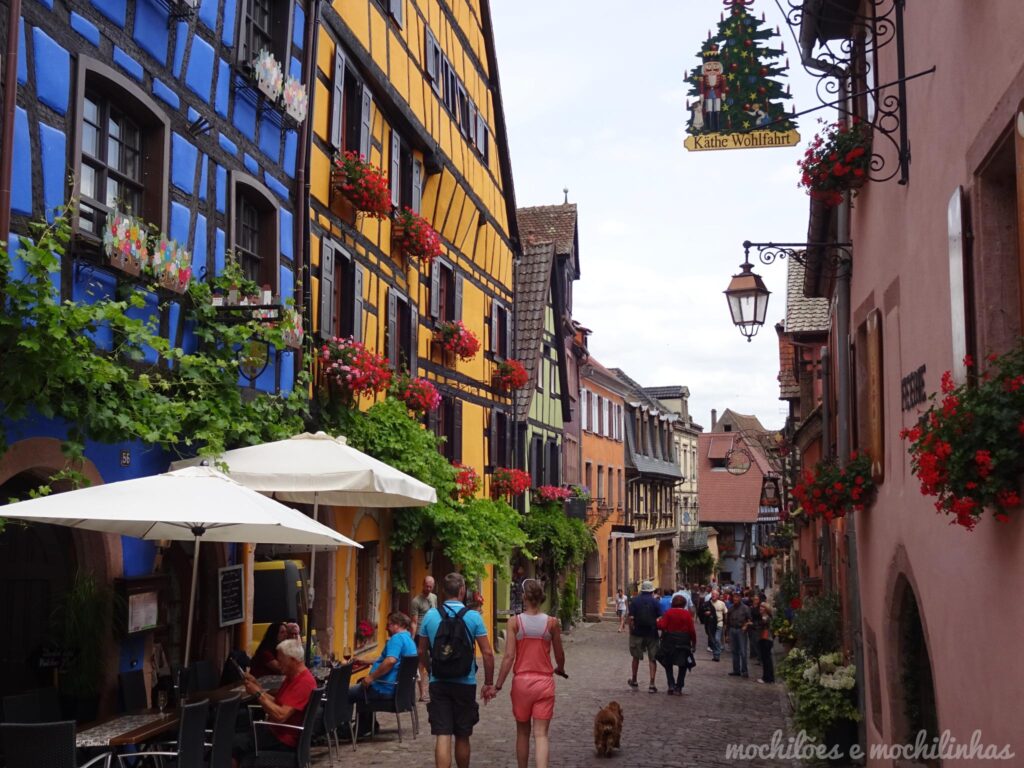
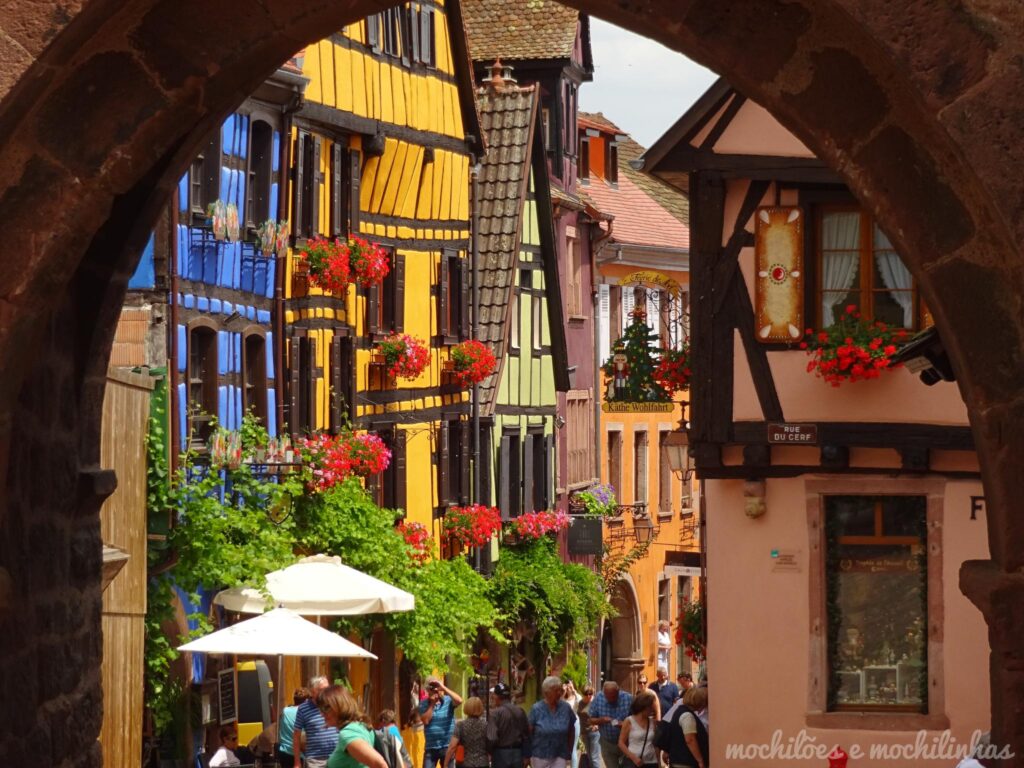
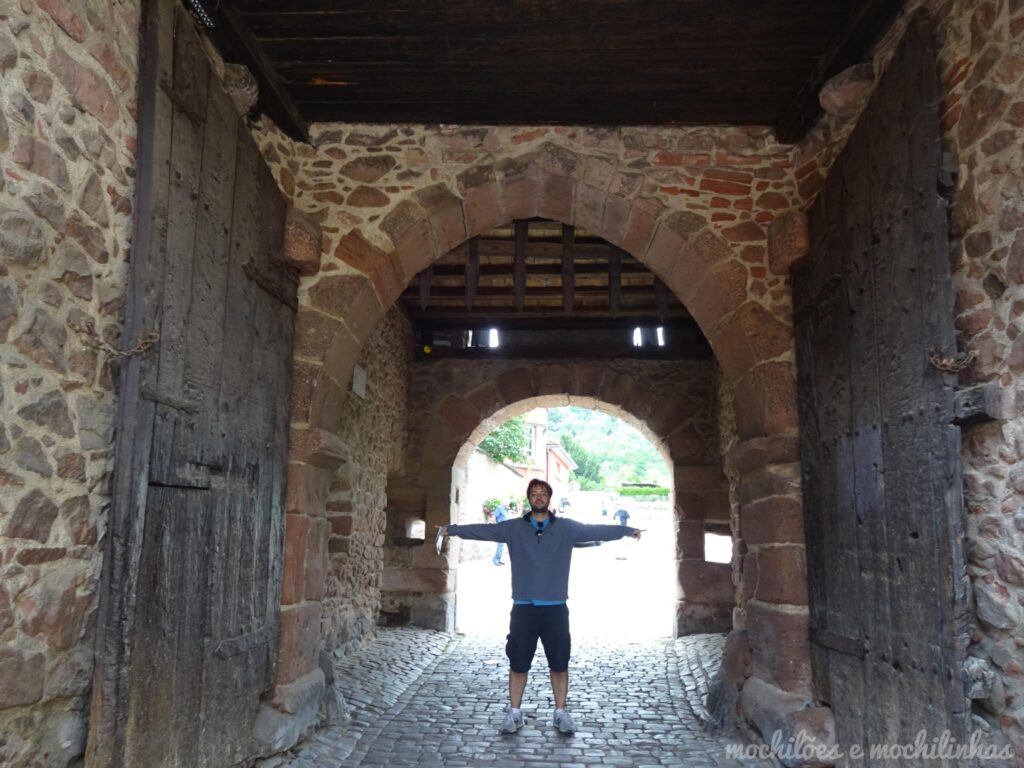

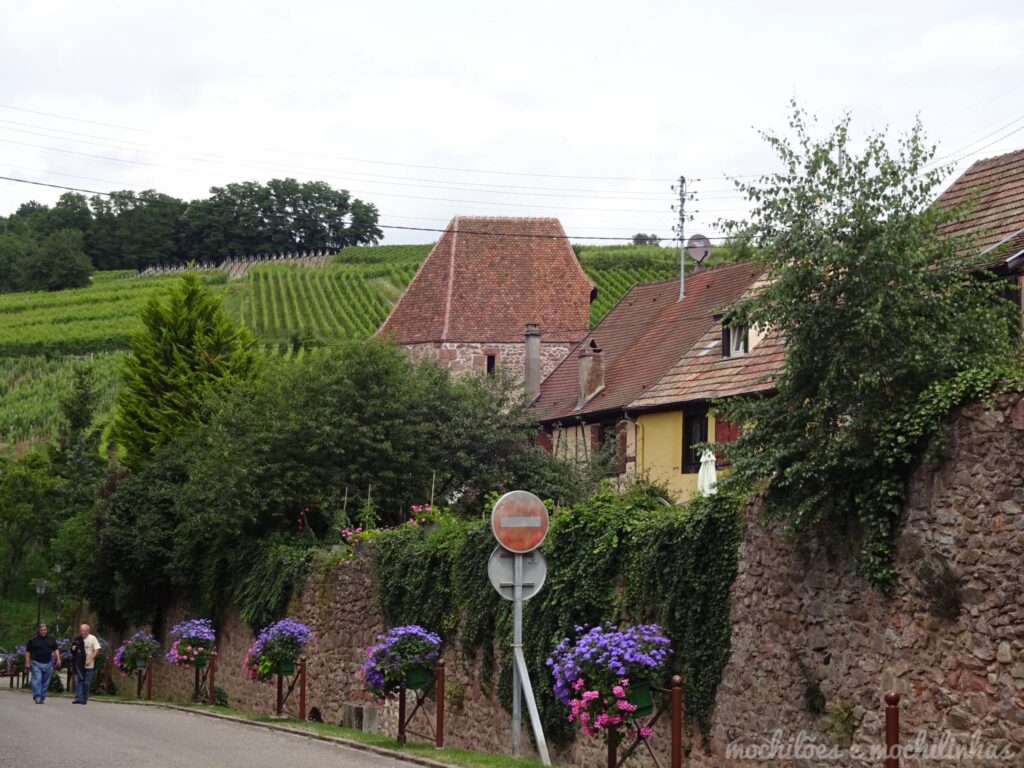
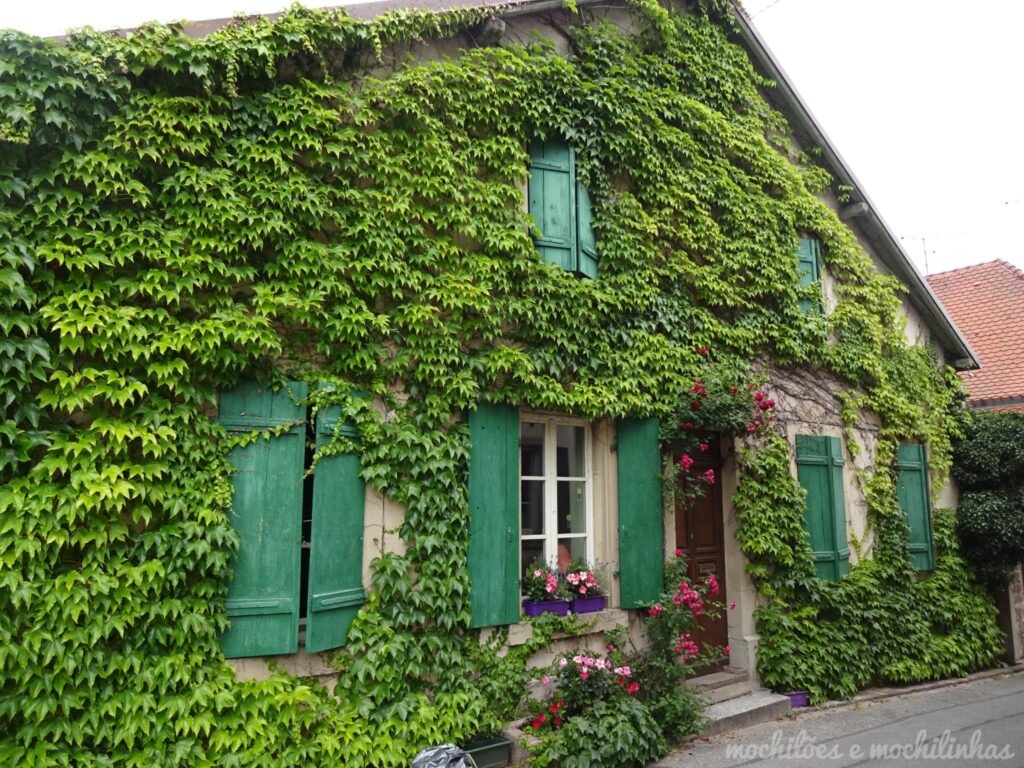

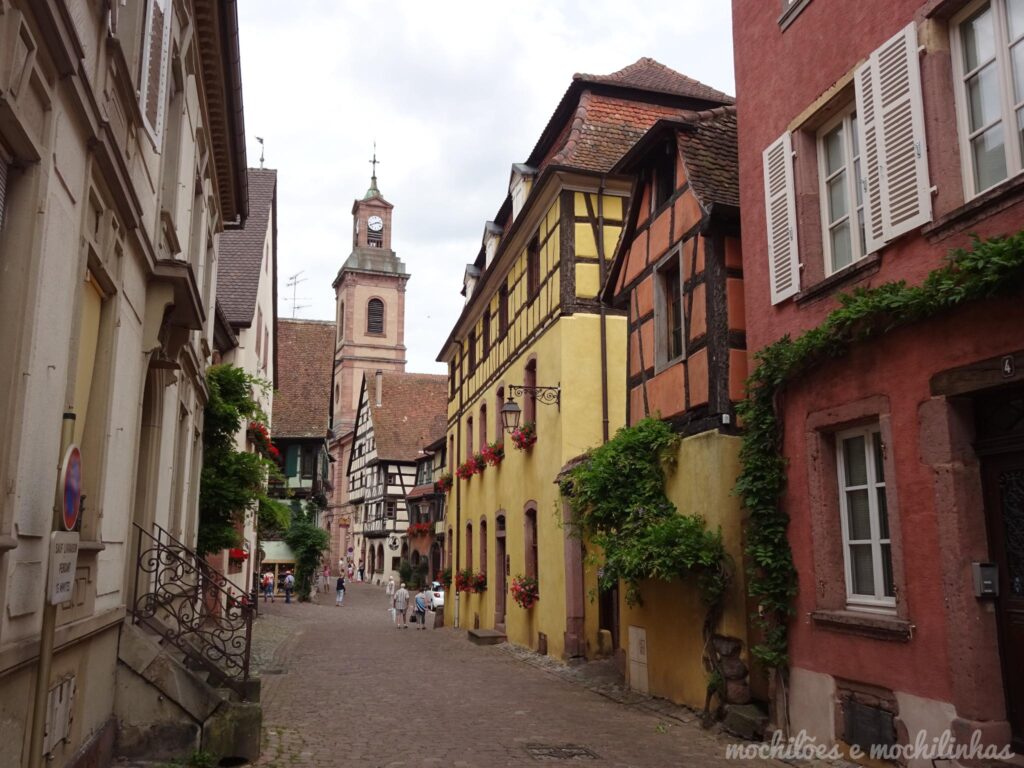


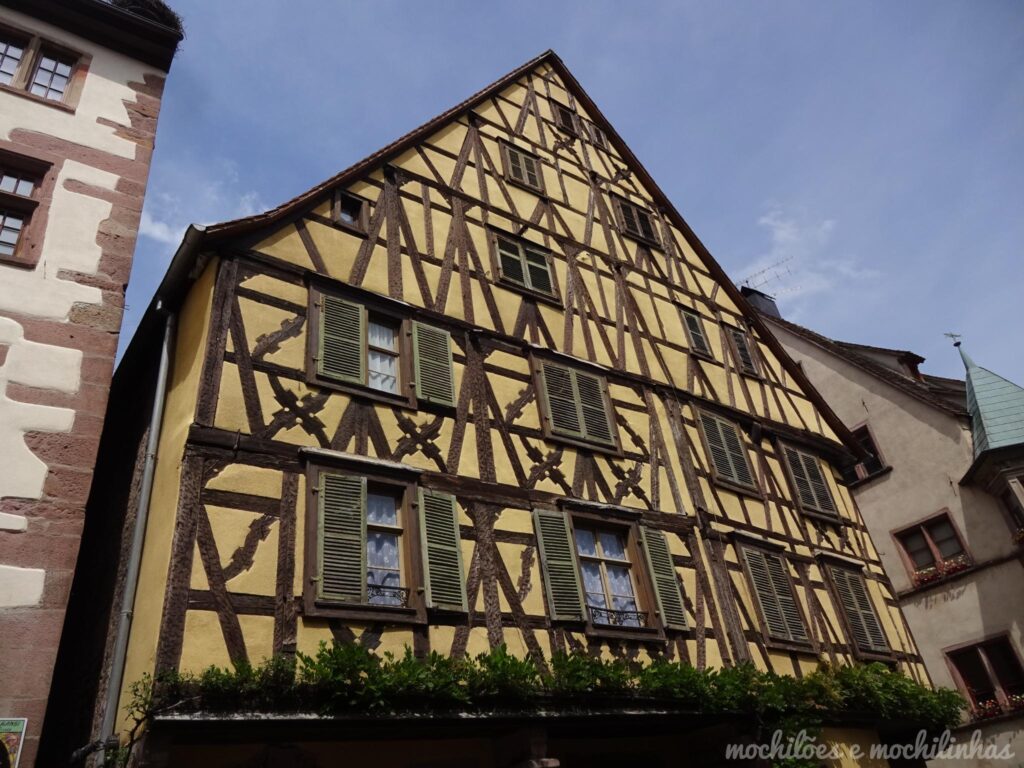
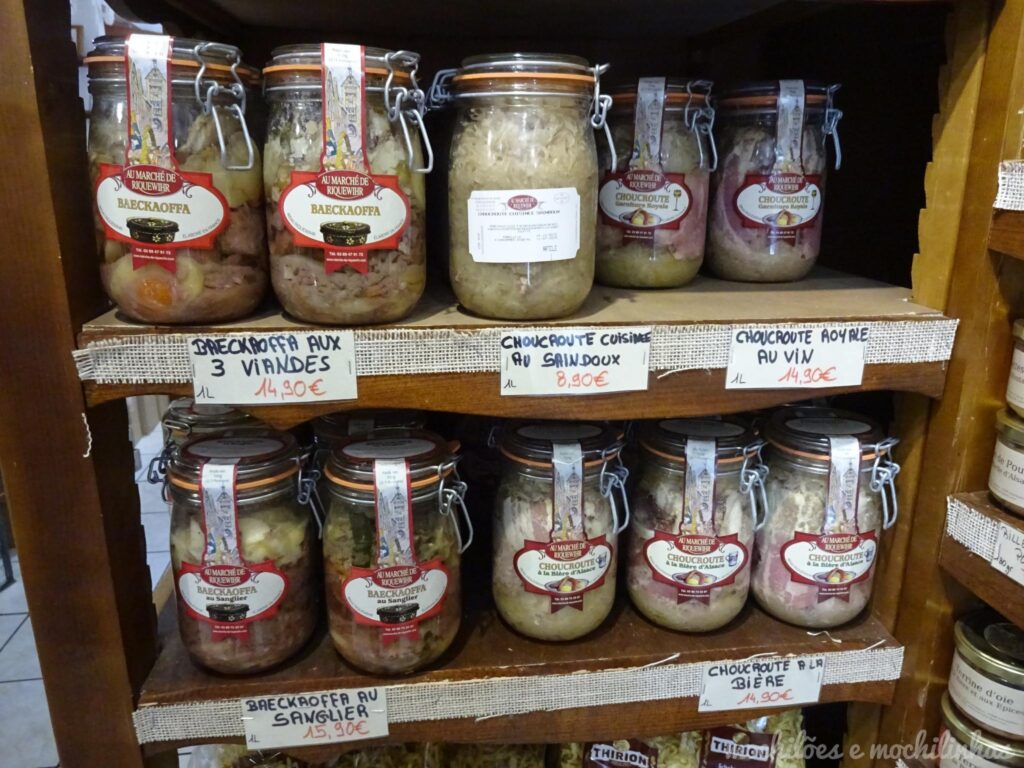
We sat in a restaurant called Winstub La Taverne Alsacienne and we tried other dishes from the region, this time better than the ones from the previous day. I ate a delicious chicken gratin and Celo tried a very traditional dish, baeckeoffe, which contains beef, pork, onions, potatoes, wine and other things. He liked it! We tried one of the wines from the region, the Gewurztraminer Grand Cru, and I wasn't a big fan, because I found it strong and sparkling. Oh! In addition to this grape, the region is famous for its Moscatel, Tokay and Riesling grapes, the latter of which we tried and liked.
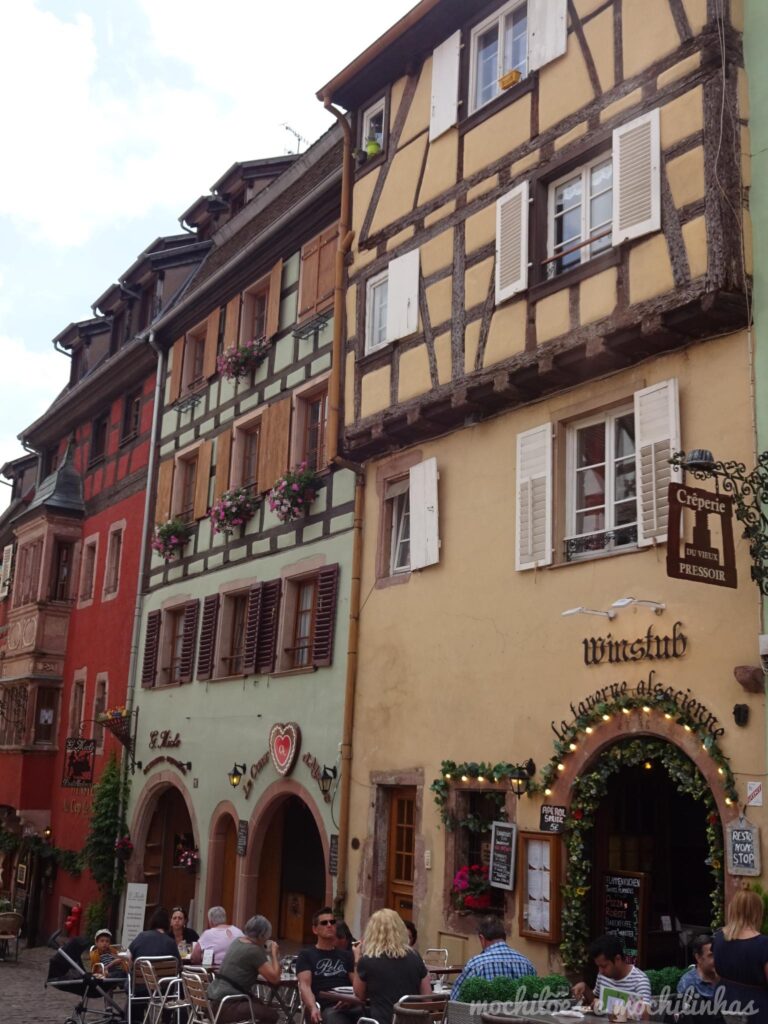

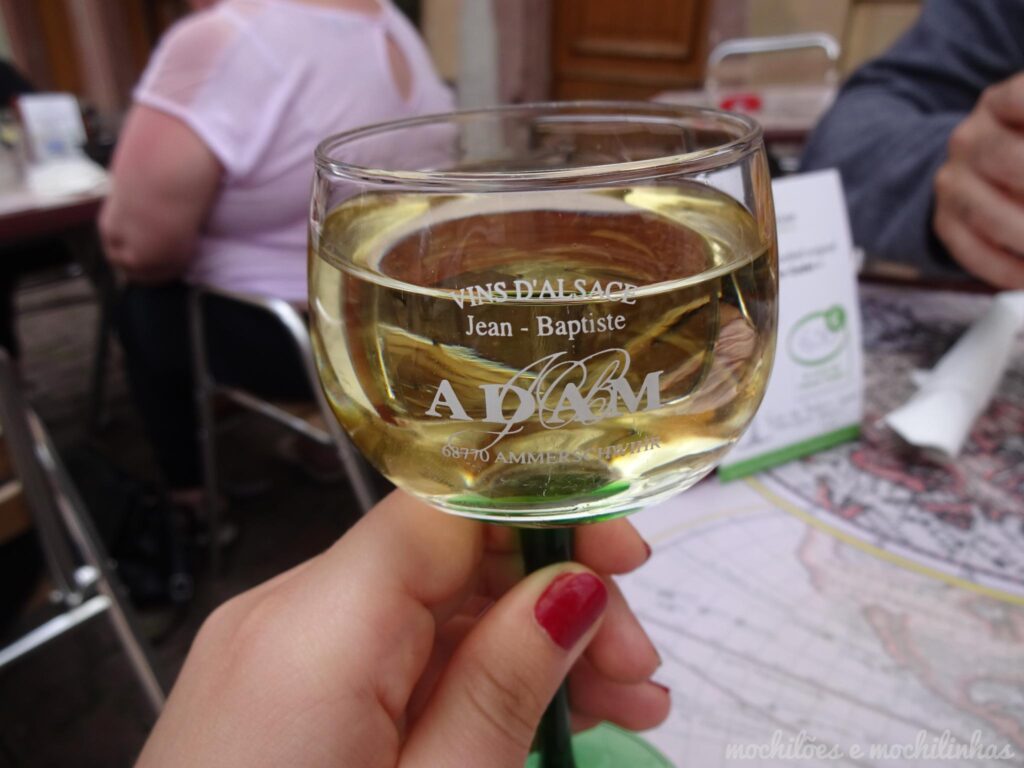
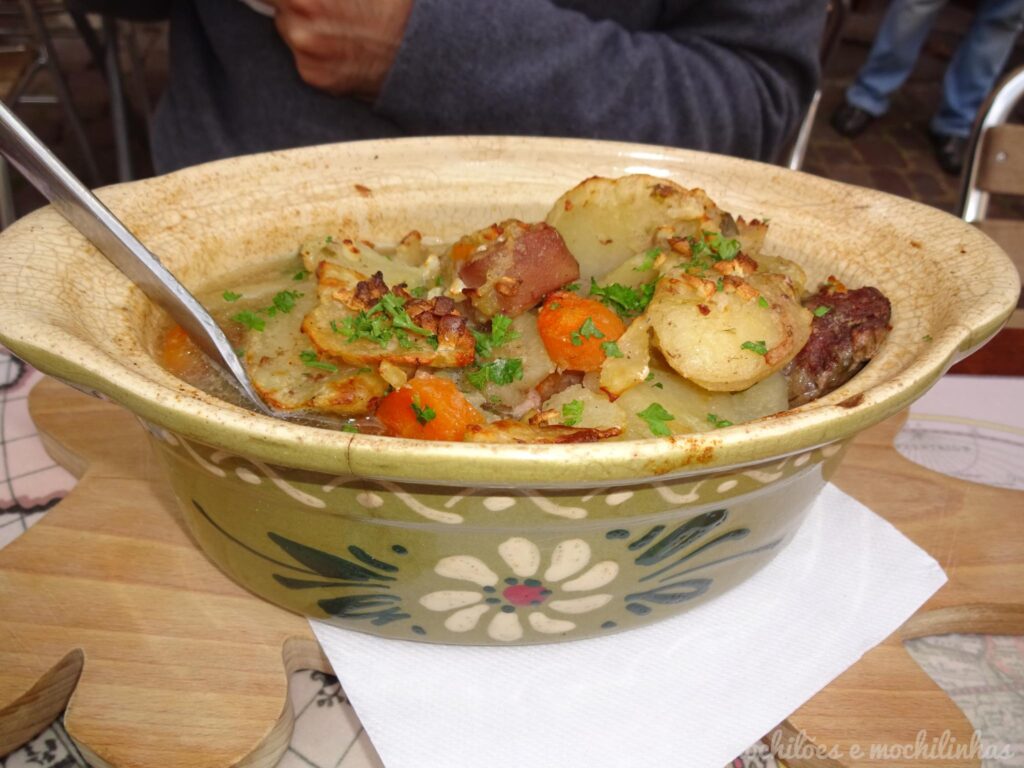


Hunawihr
Our next stop was in the village of Hunawihr, a cute thing with a church on top:



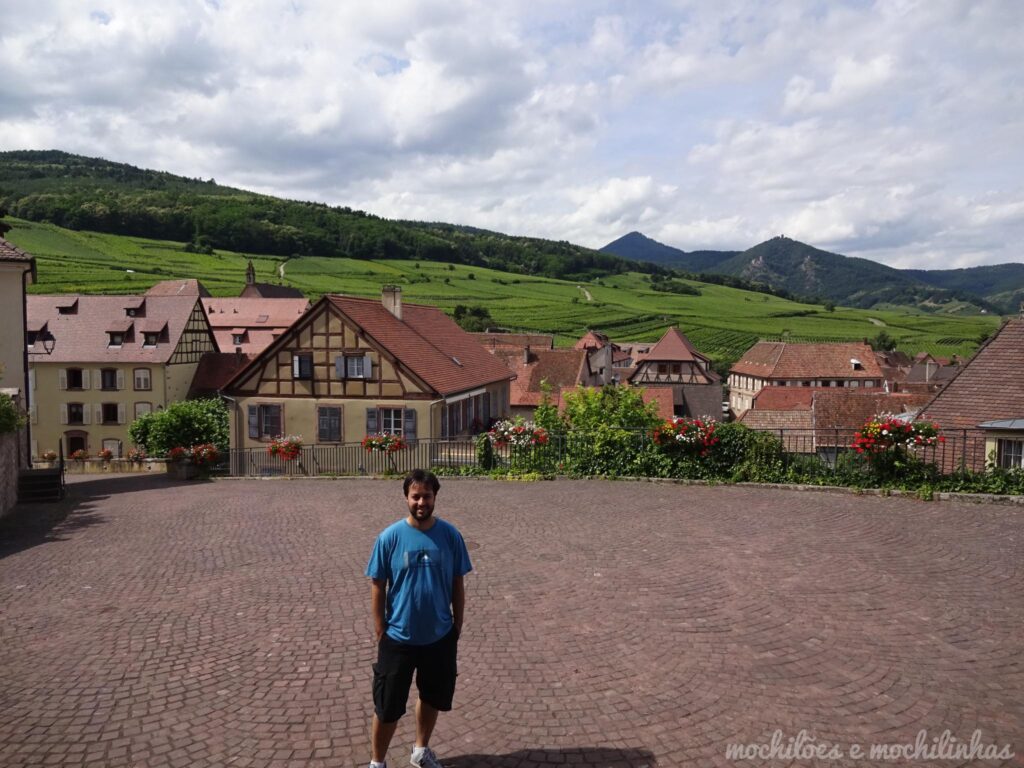
Ribeauville
We then passed by Ribeauville, which has a main street full of shops and bakeries, a fountain in a flower-filled square and an imposing castle on a nearby mountain. We tried the Kougelhopf, a delicious almond cake/bread typical of the region. I recommend it!

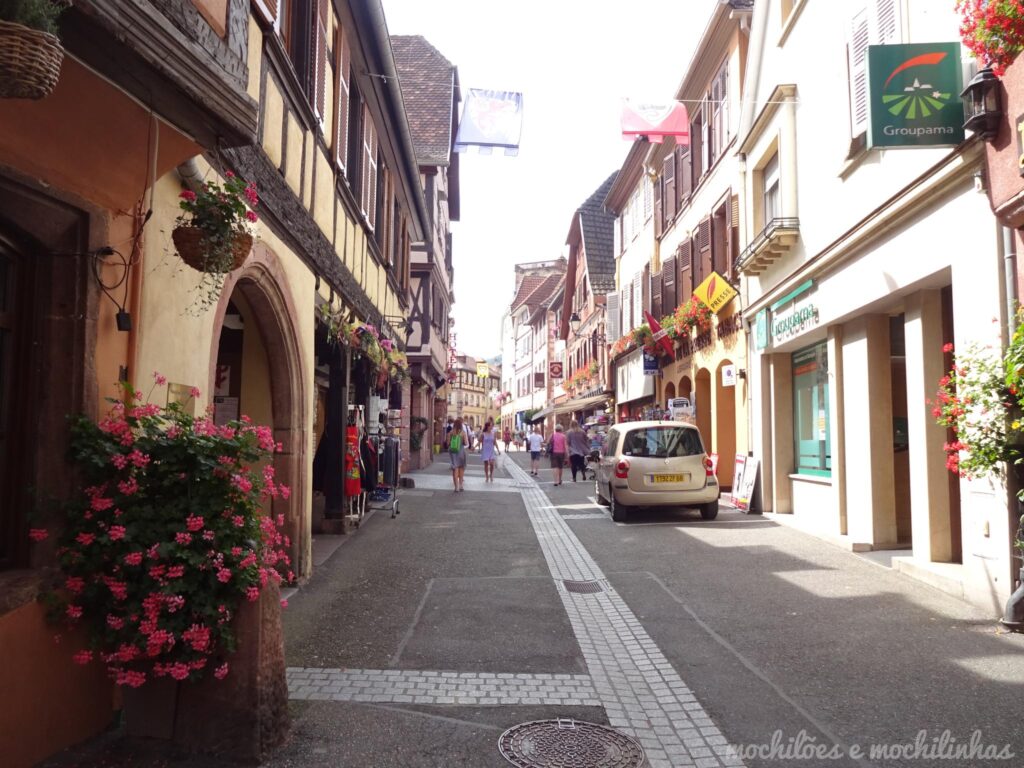

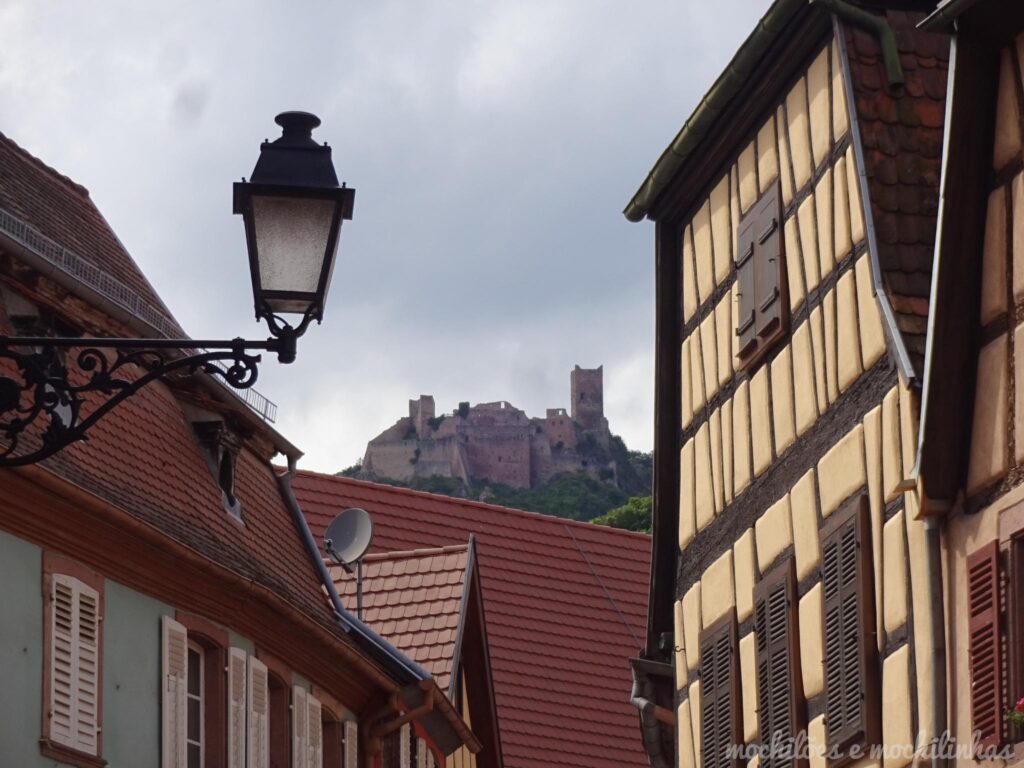
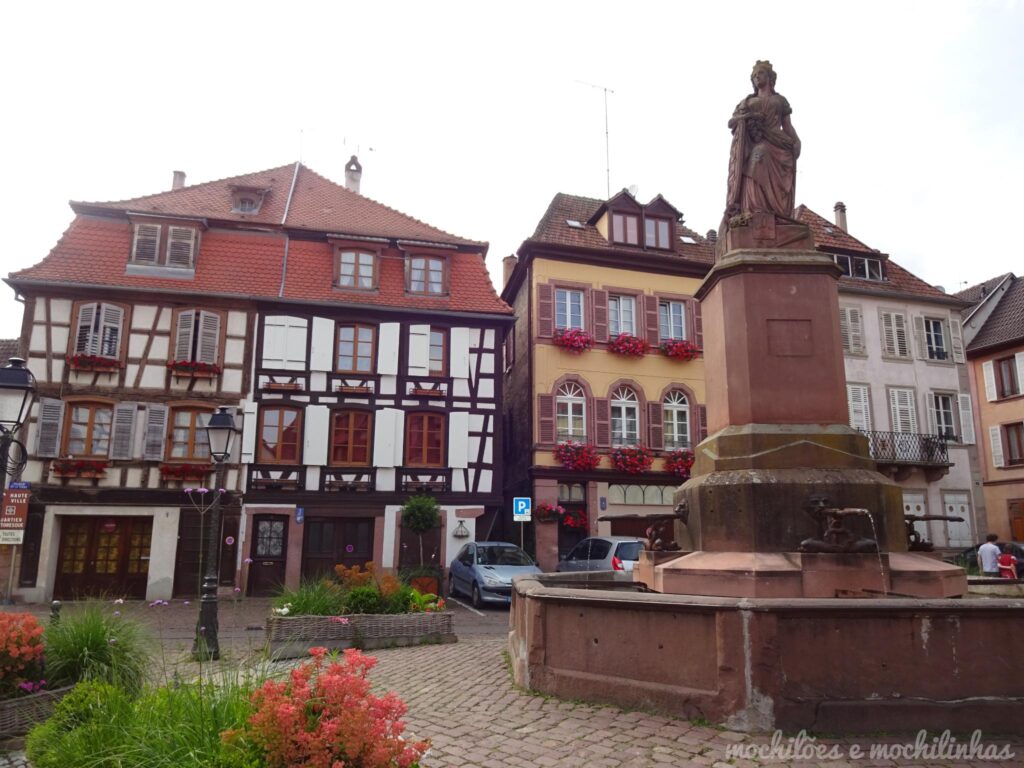
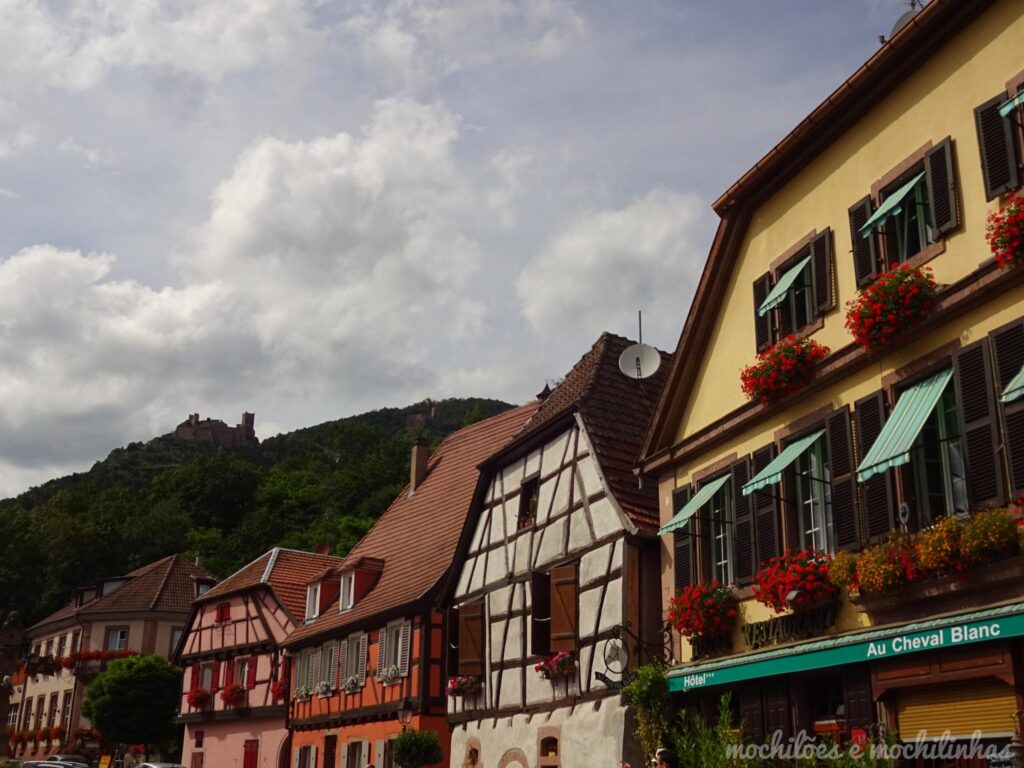


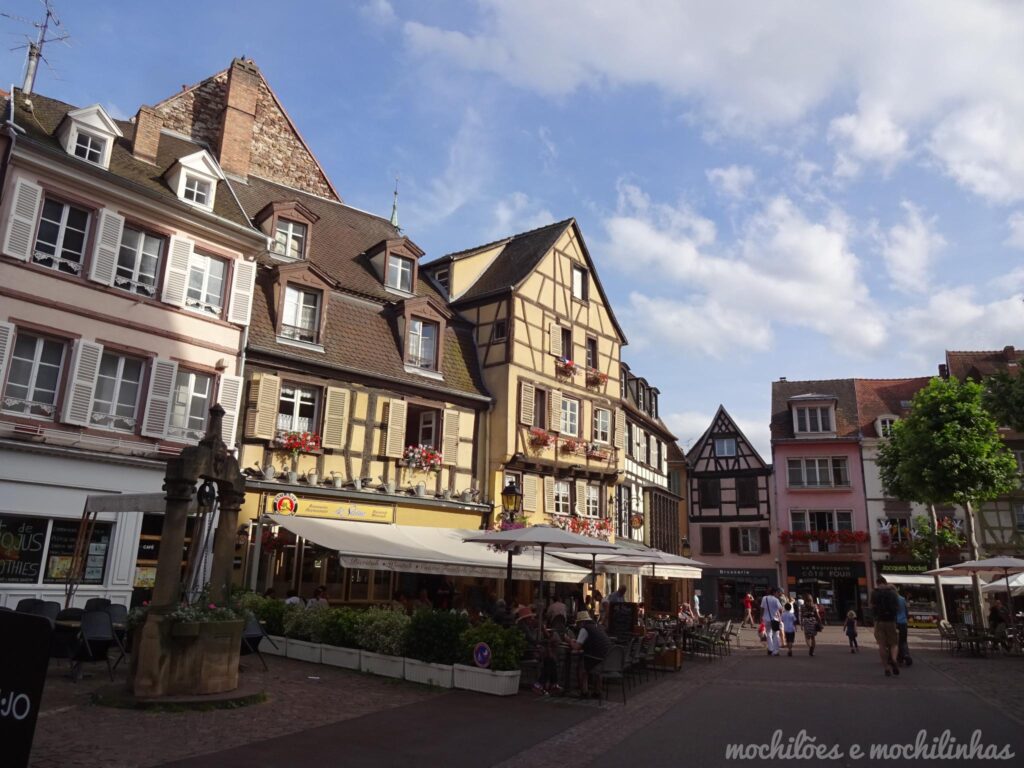
Colmar
We left the walk for last in Colmar, which despite being much larger than its neighbors, manages to enchant in the same way with its canals, narrow streets, colorful houses and many squares. As we arrived a little late in the city, we were unable to enter the churches and other attractions, so we just walked around without rushing. The region of Little Venice It's just beautiful... you can understand why the village in the cartoon BEAUTY AND THE FORA was inspired by the villages in this region! <3

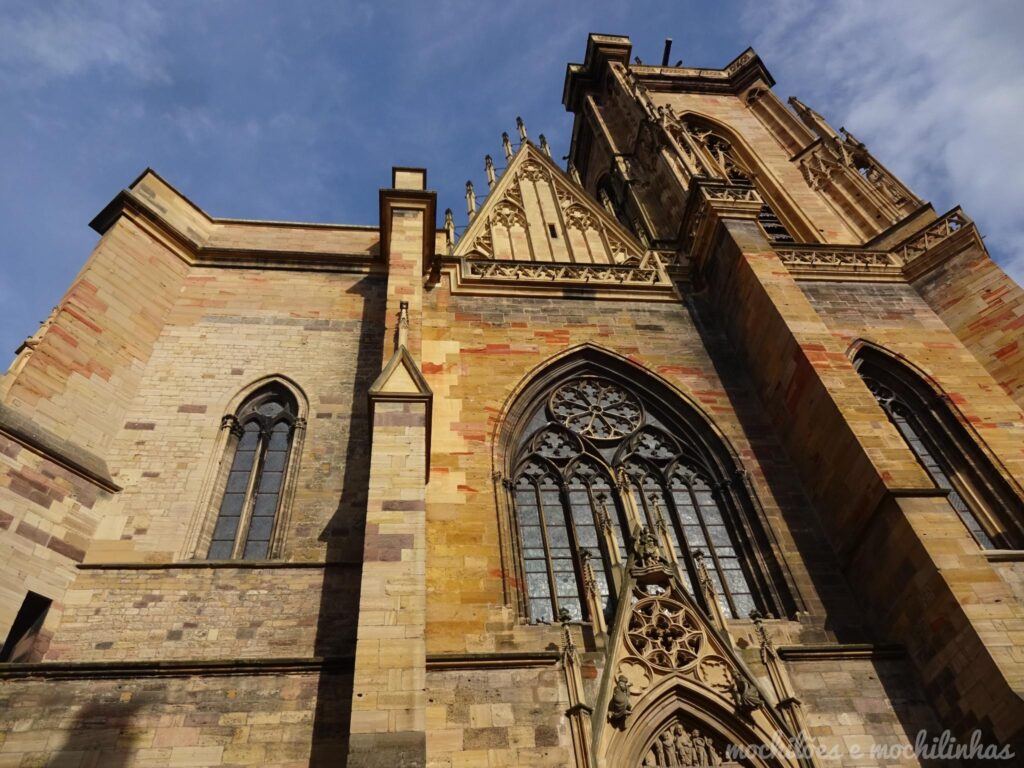

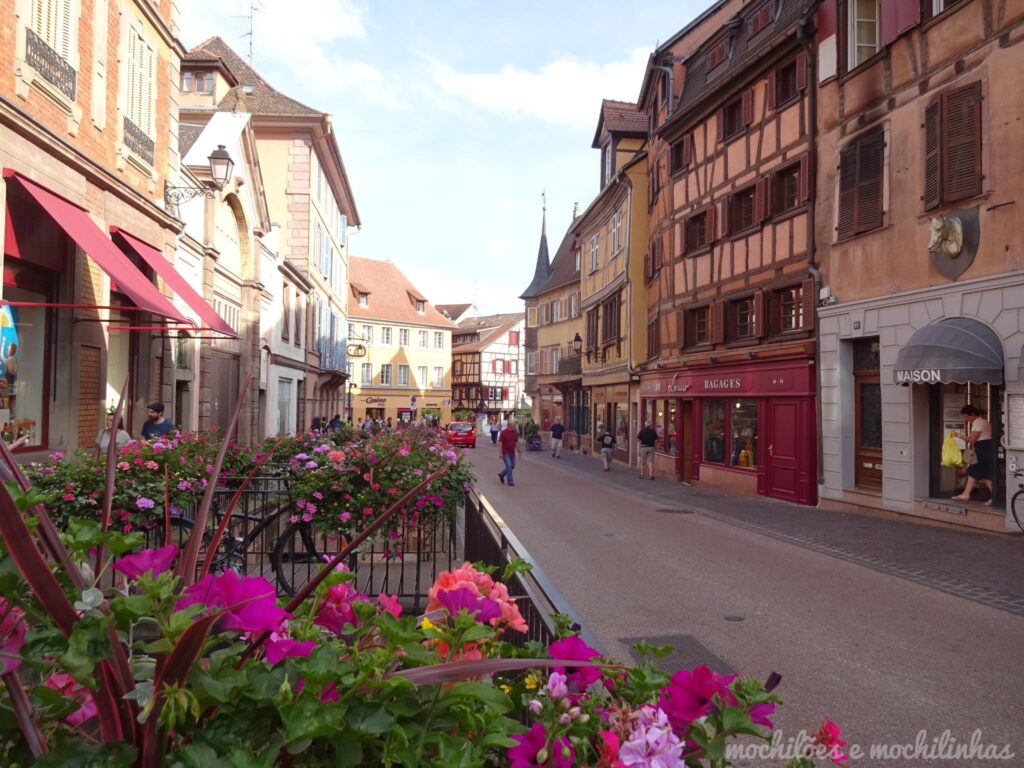

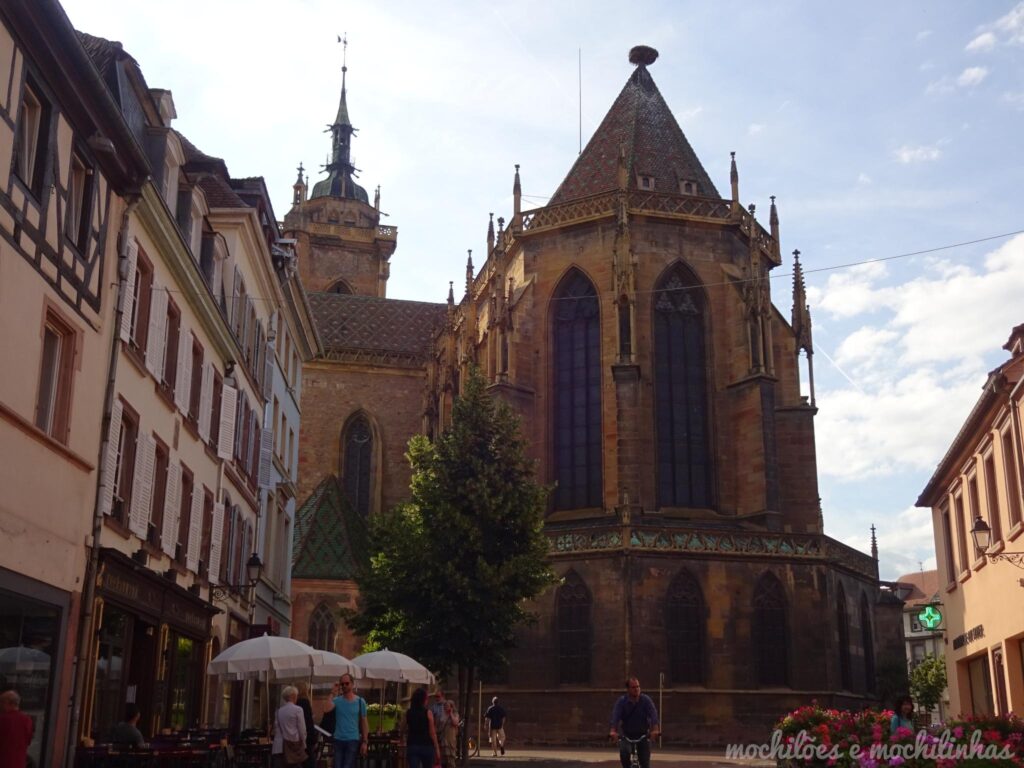
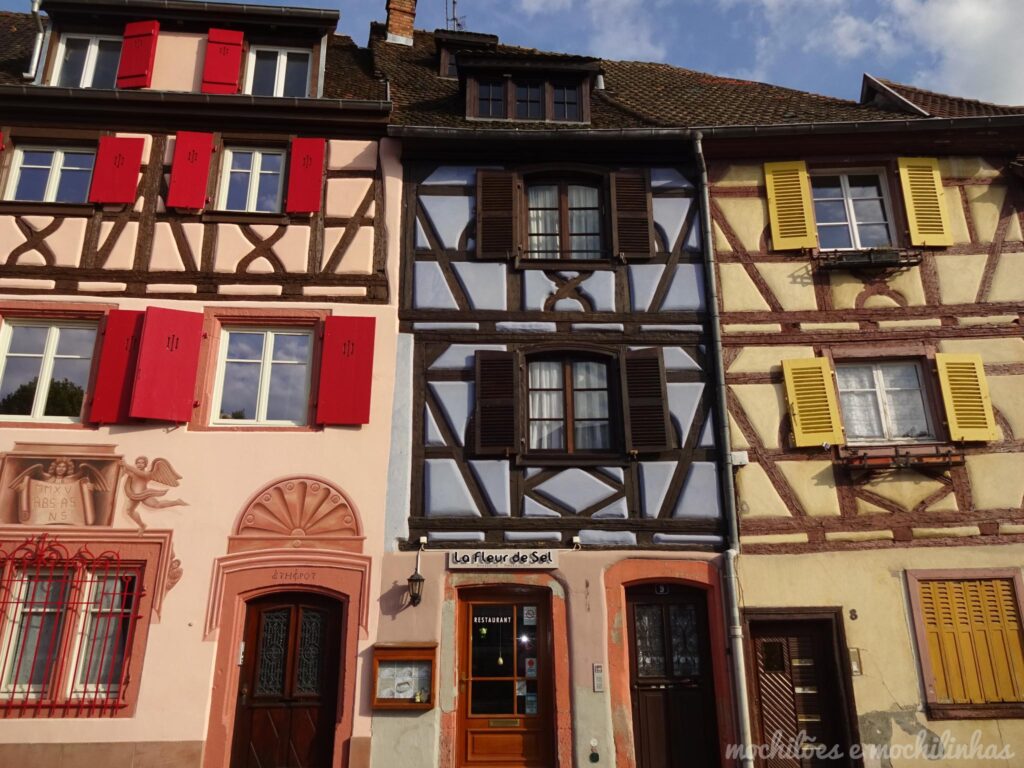

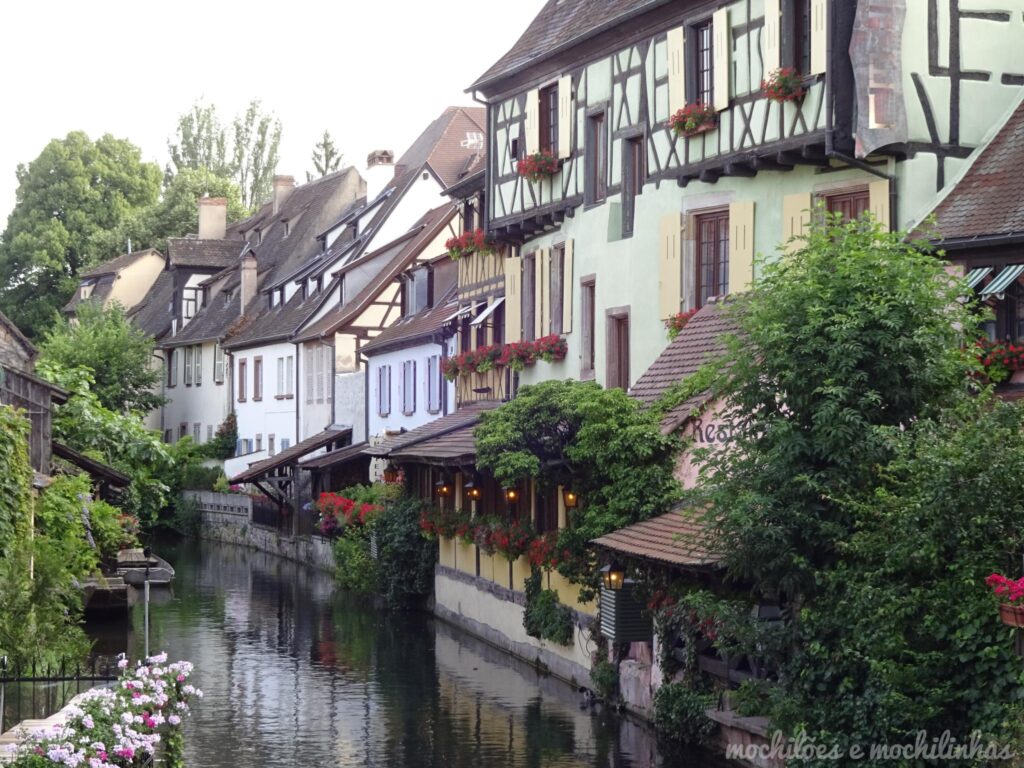
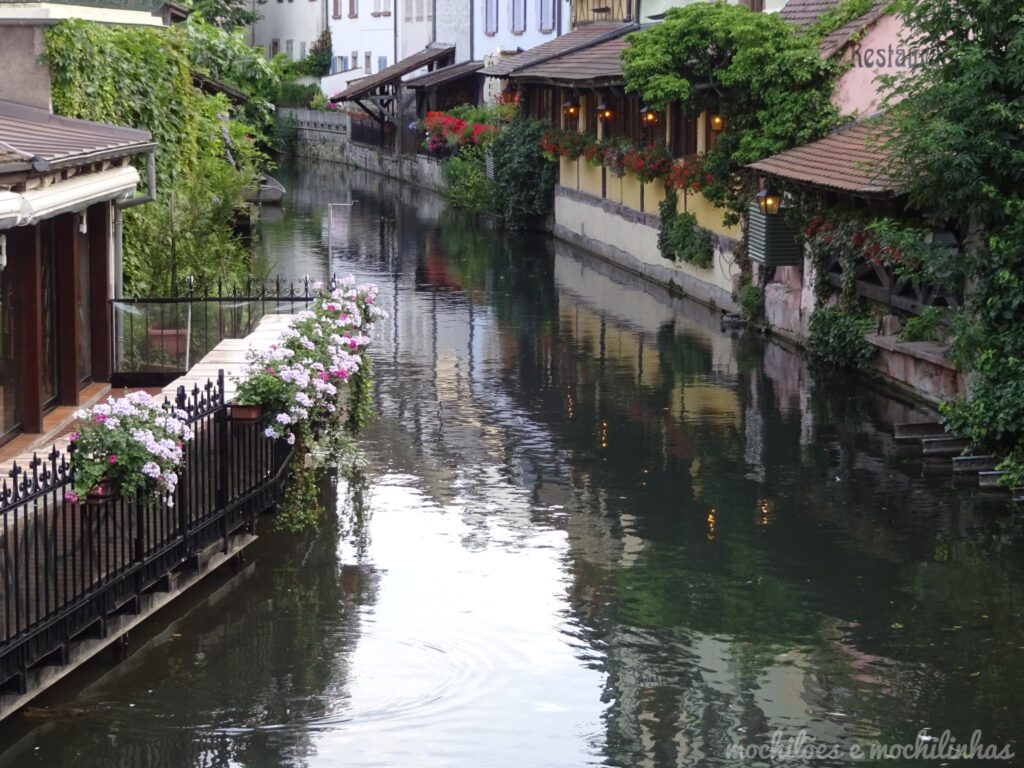
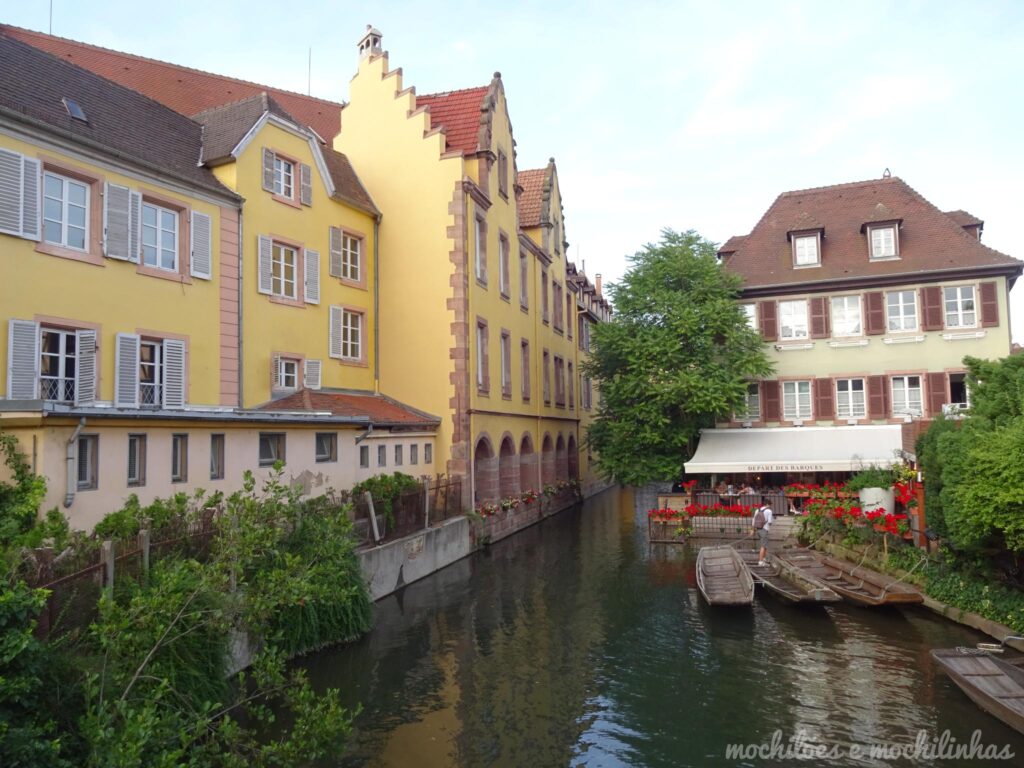
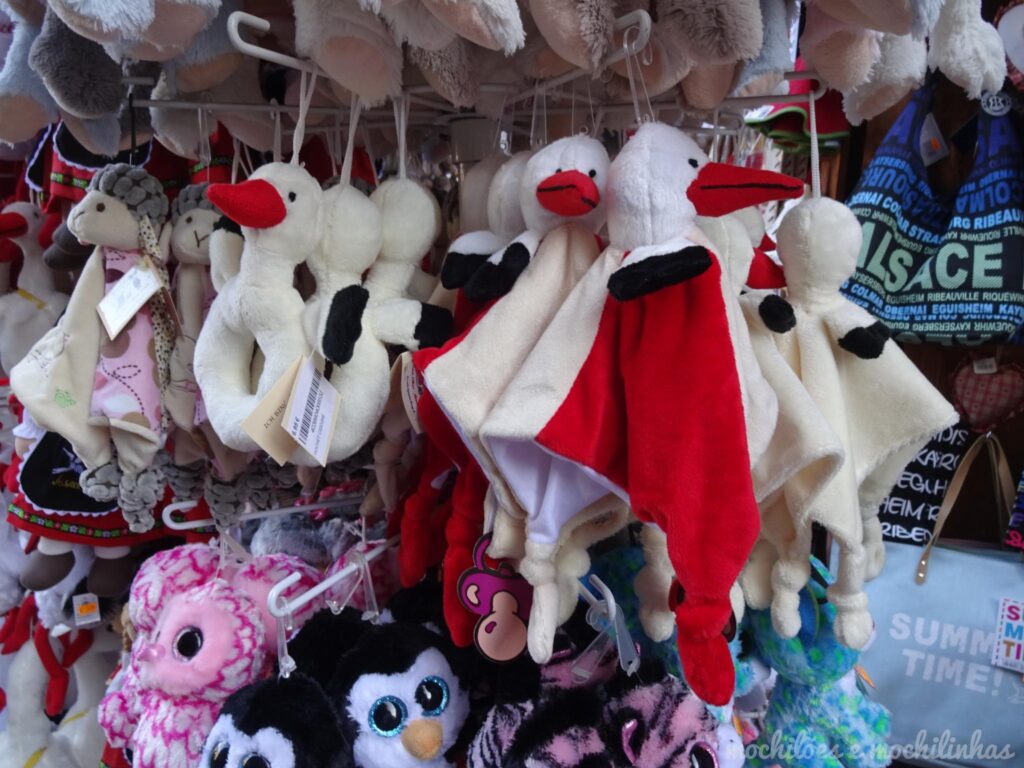
An important piece of information is that the creator of the Statue of Liberty was born here and that's why there's a mini statue in his honor in the middle of the road. It's super cheesy, but it's important to explain why it's there, right?
At the end of the day, we were exhausted and ended up stopping at the market to buy some tasty snacks for our dinner. We bought a wine of the type Riesling and we loved the combination with cheese and toast. Much more affordable than going out to dinner… and much tastier than the typical regional food. 🙂
Day 3 – Thursday (07/07/2016)
Rodern
We had breakfast in the room again and hit the road to visit a winery recommended by my mother-in-law, Koeberle Kreyer. They have been producing wines since 1760 and are in Rodern, but when we got there, the owner had a dentist and couldn't do it tour with us. He asked us to come back later, but we ended up not having time.
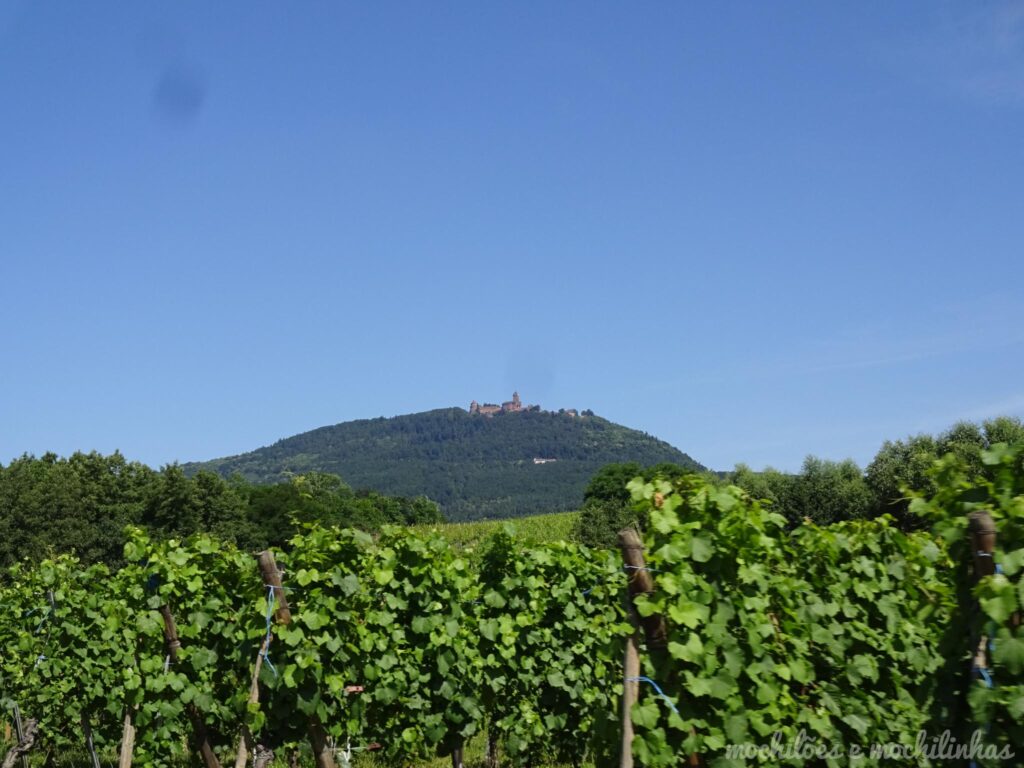
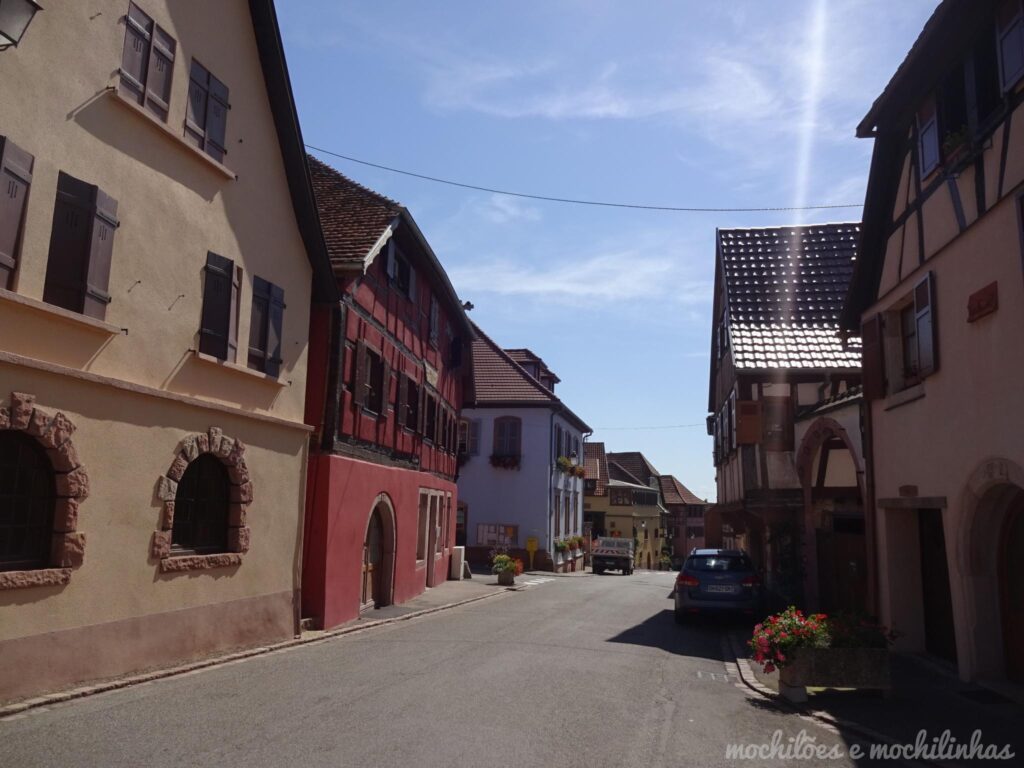

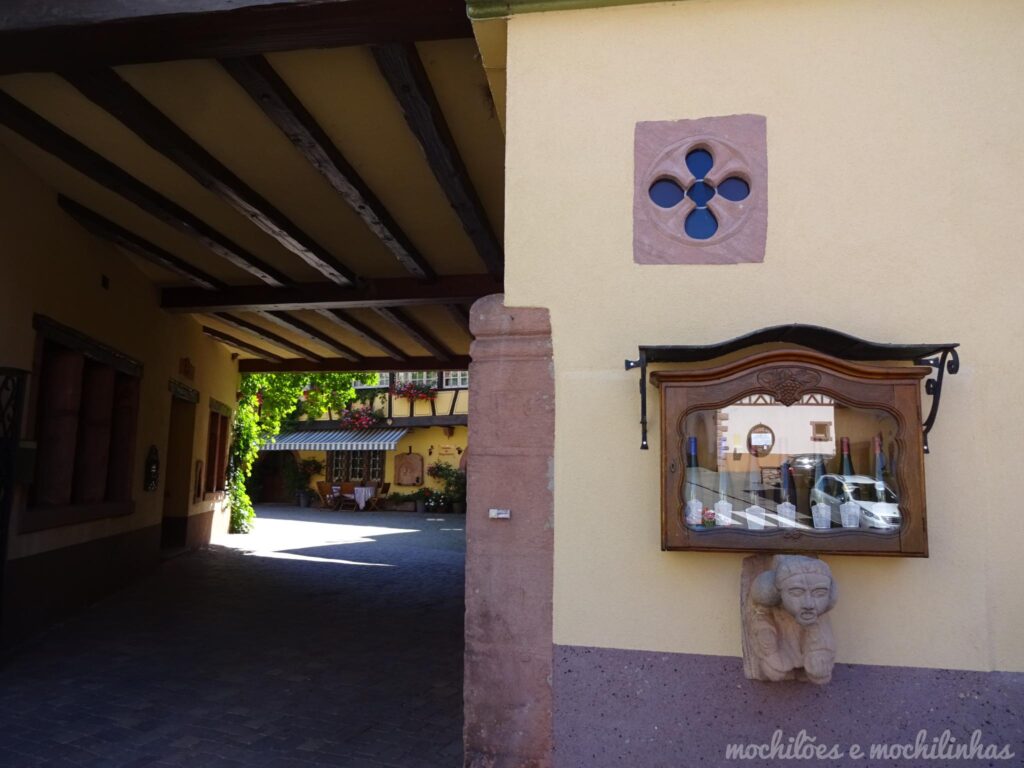
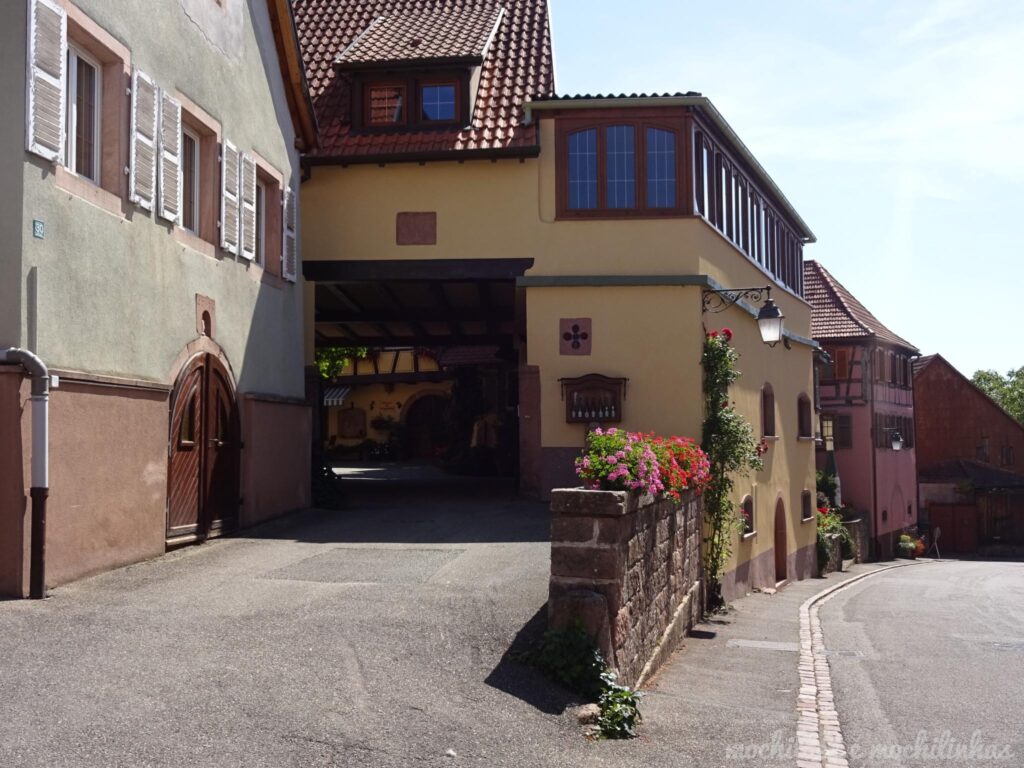
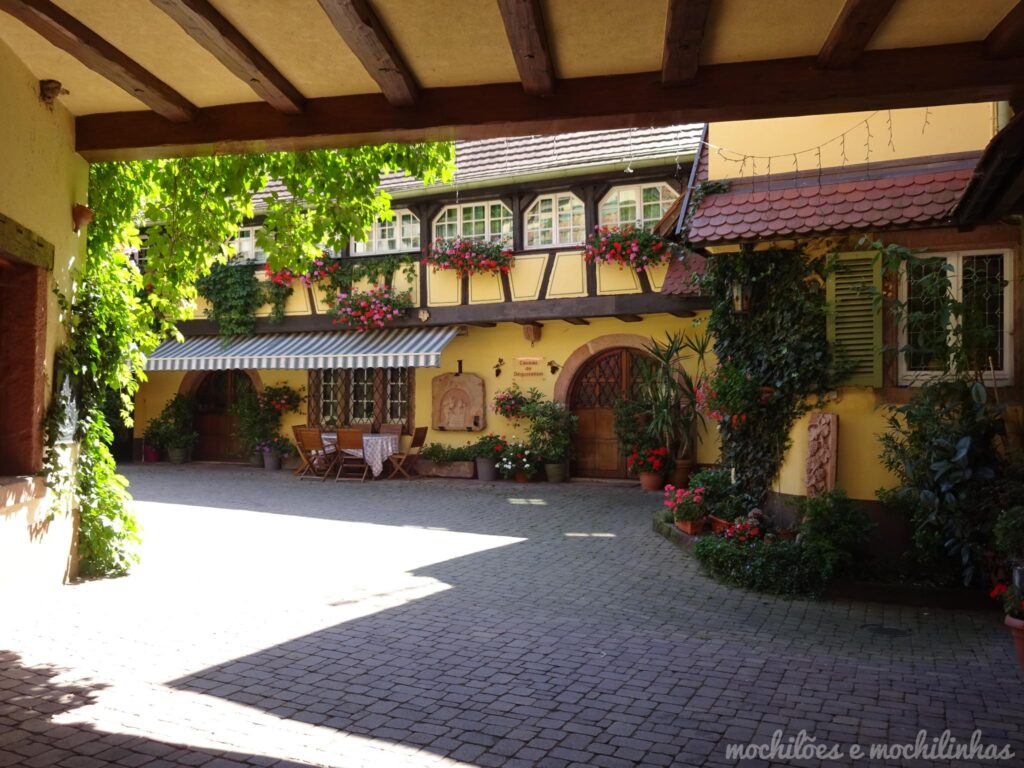
We continued on to what is said to be the main attraction of Alsace, the Château de Haut-Koenigsbourg (9 euros per person – it could be cheaper for what it offers). This castle was restored in the early 20th century under the orders of Kaiser William II, but was built in the 12th century as a fortress. We loved the tour and the views of the region. It’s definitely worth it!
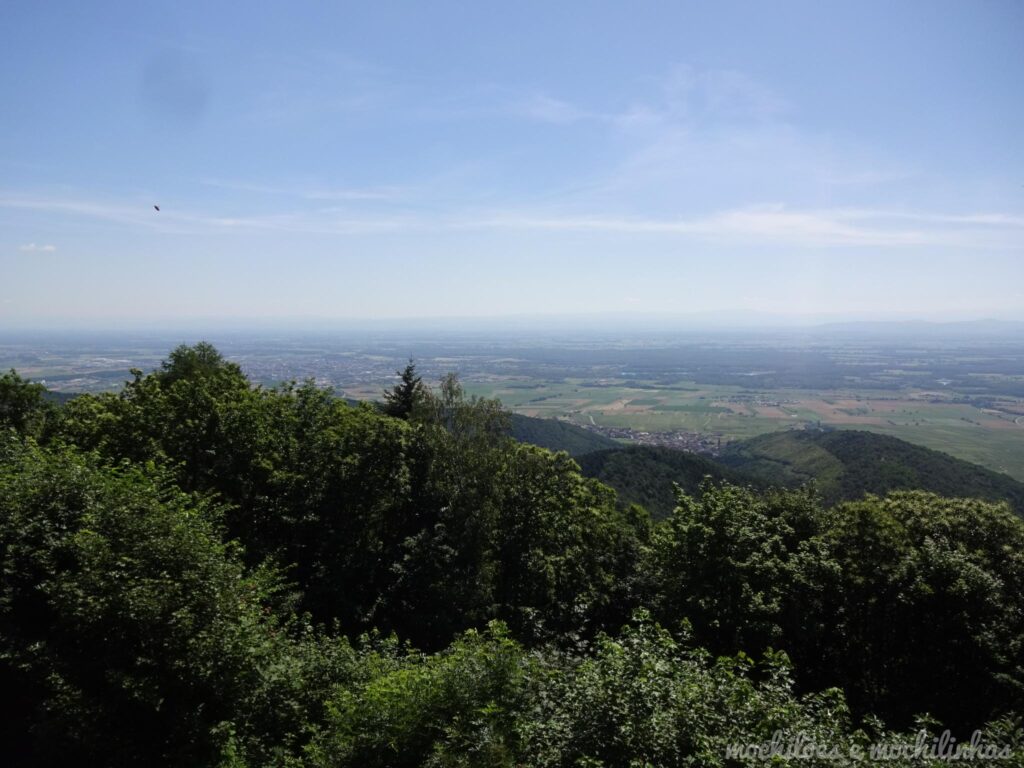


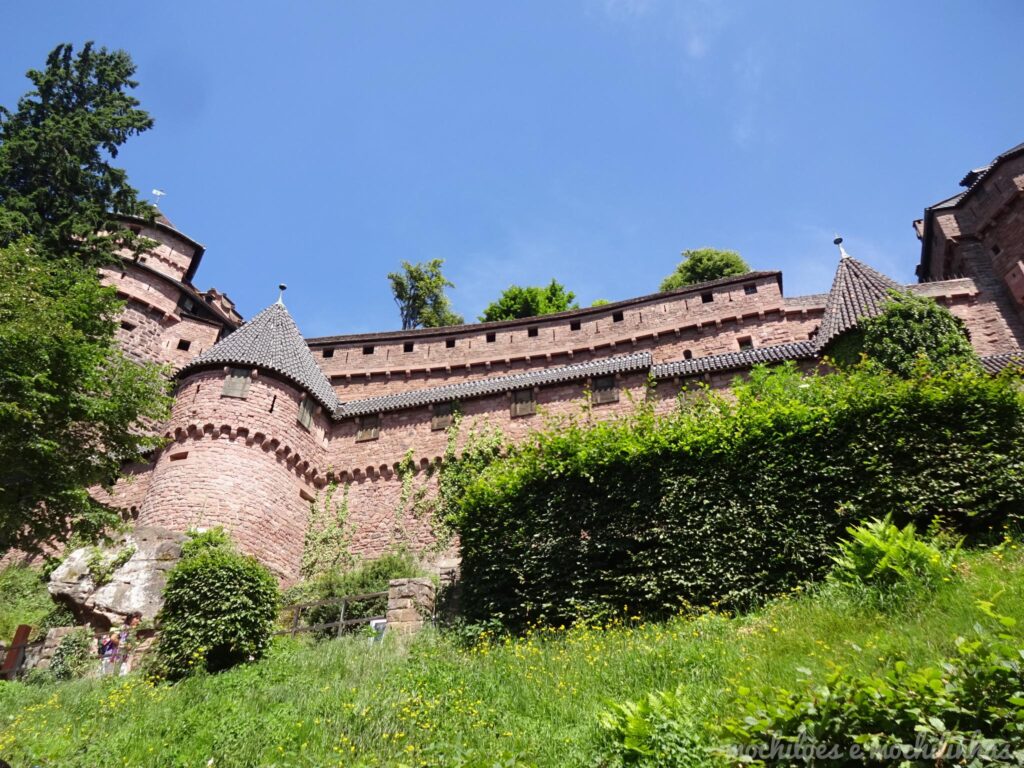

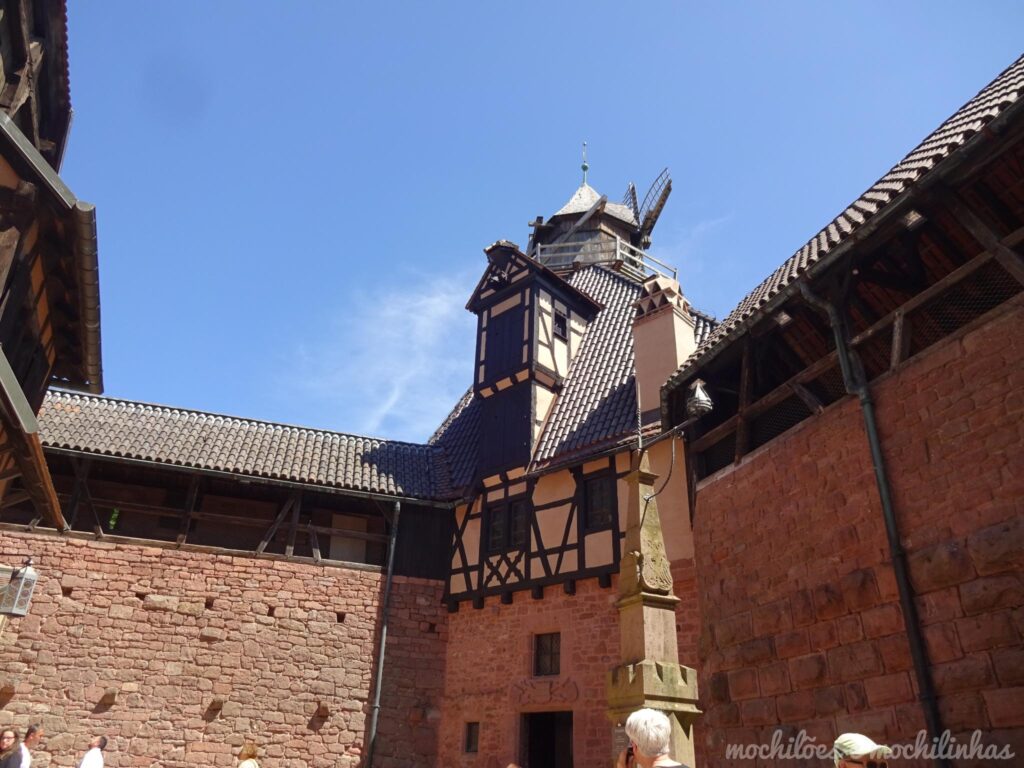
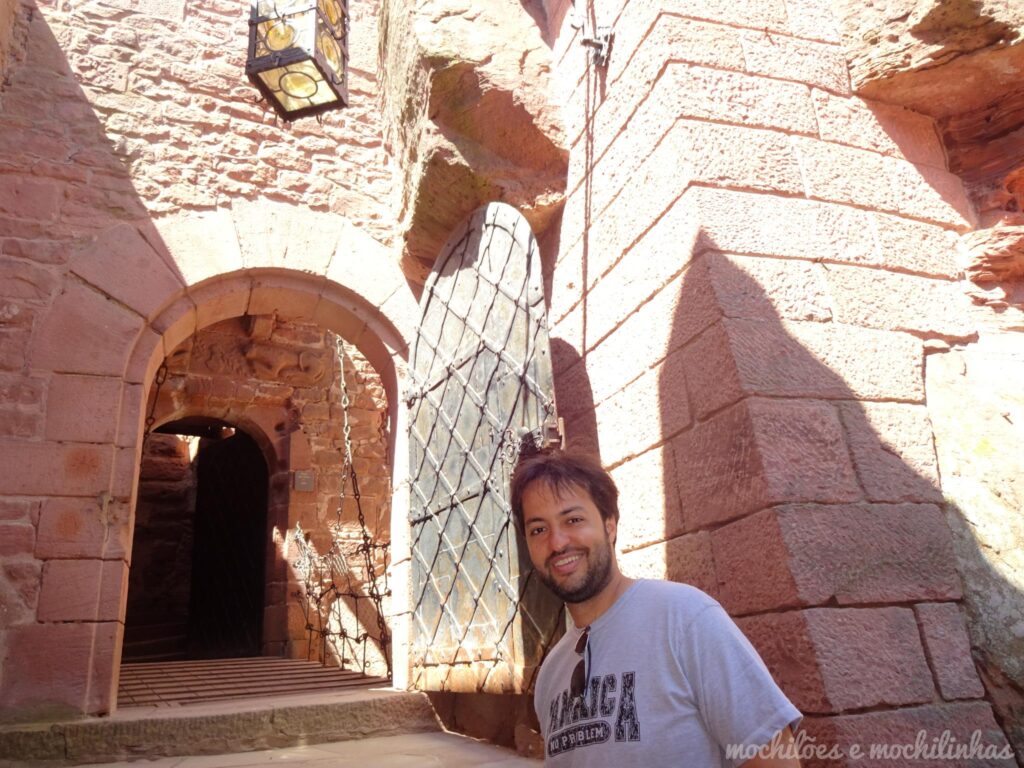
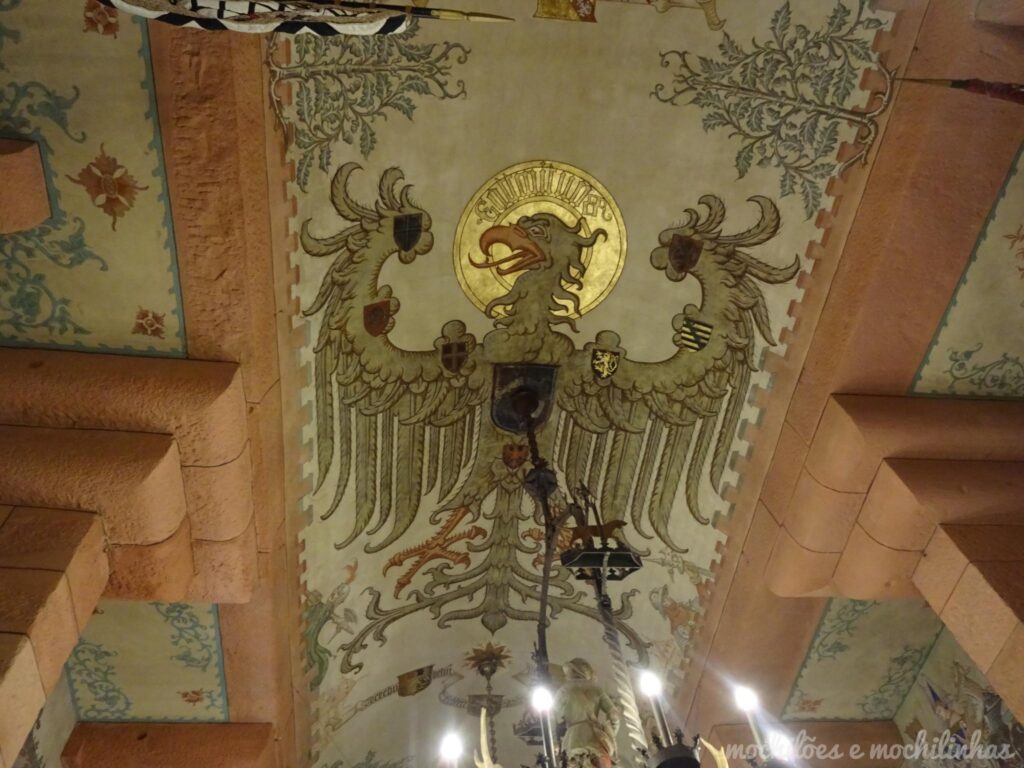
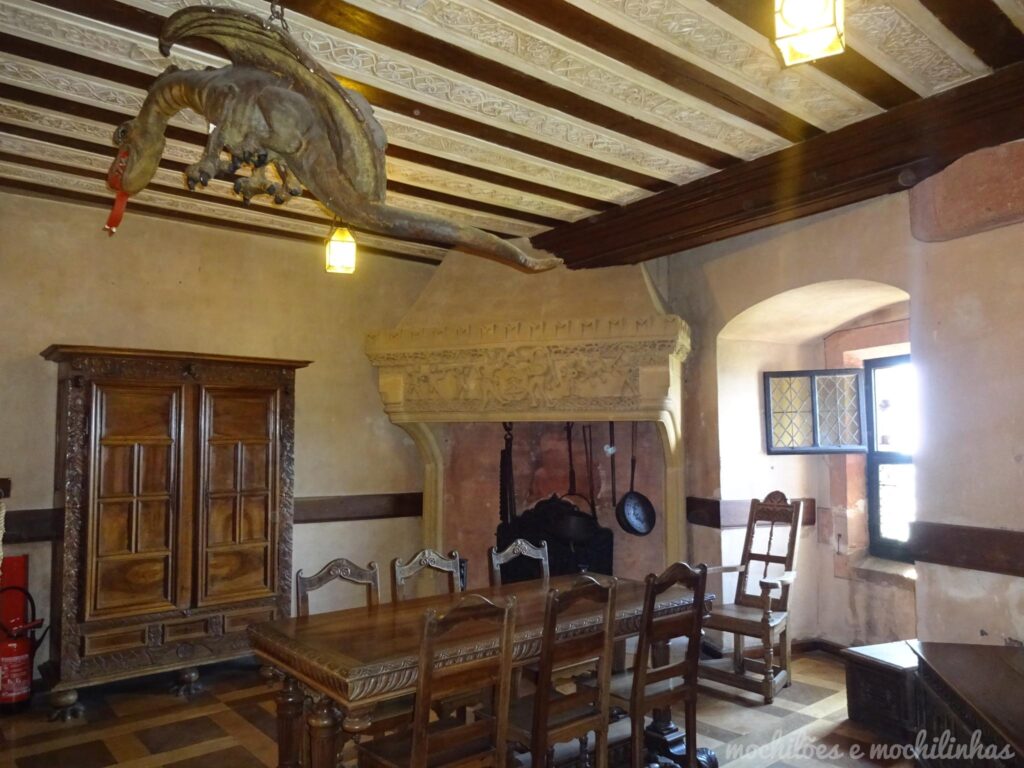
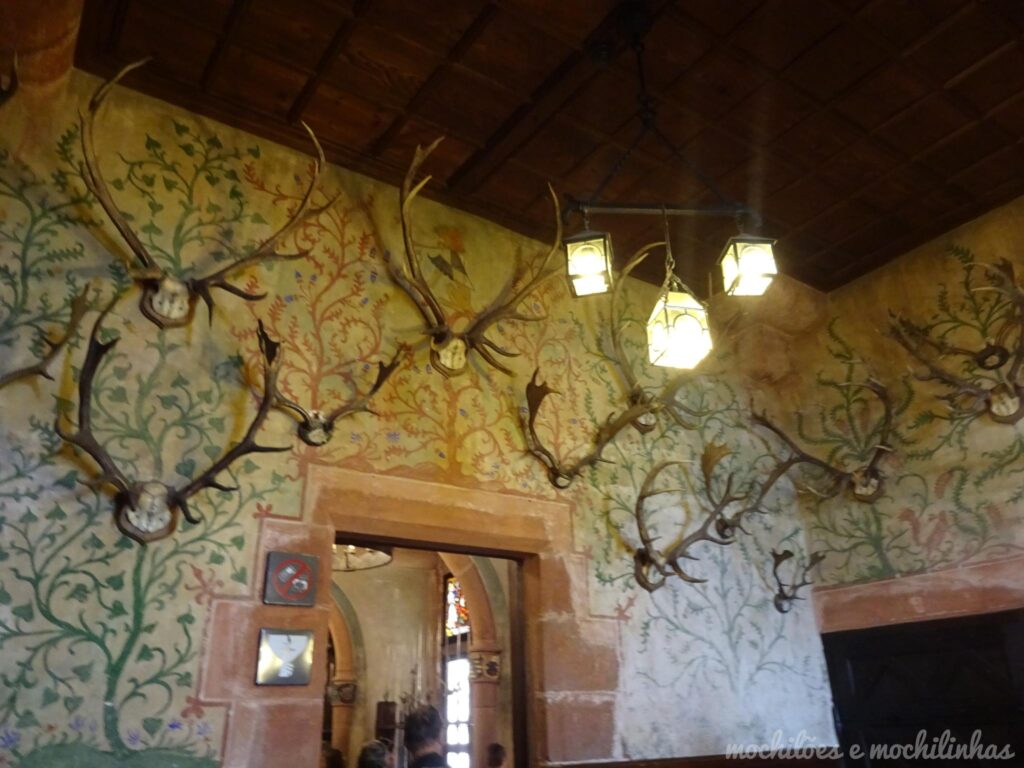

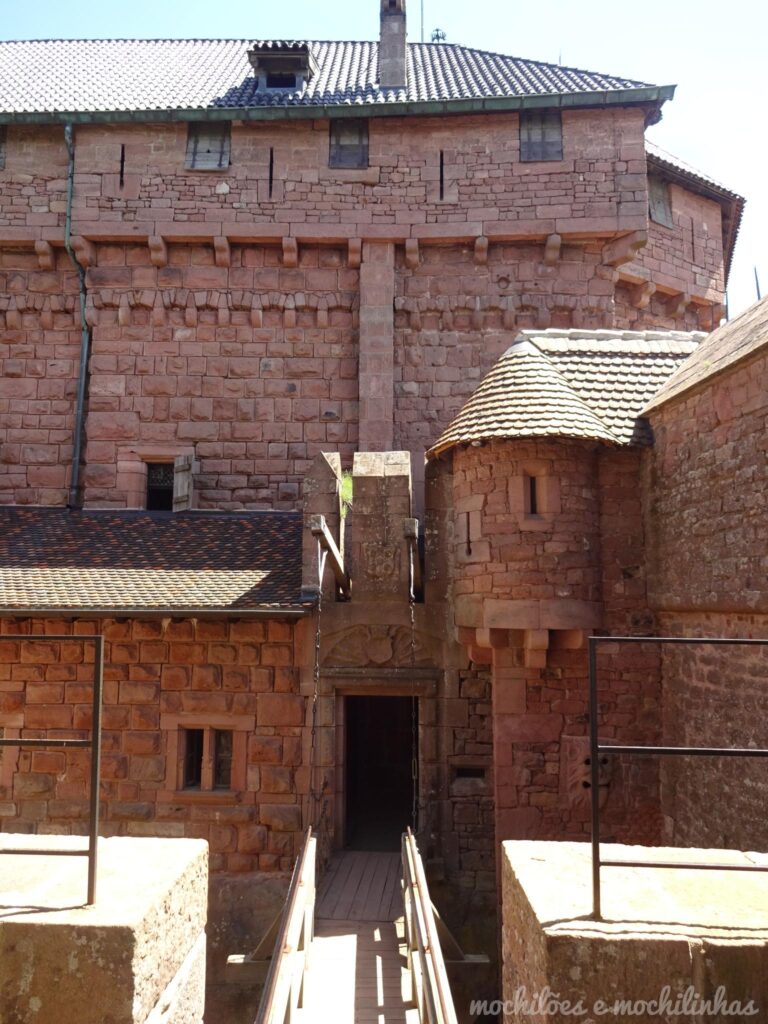



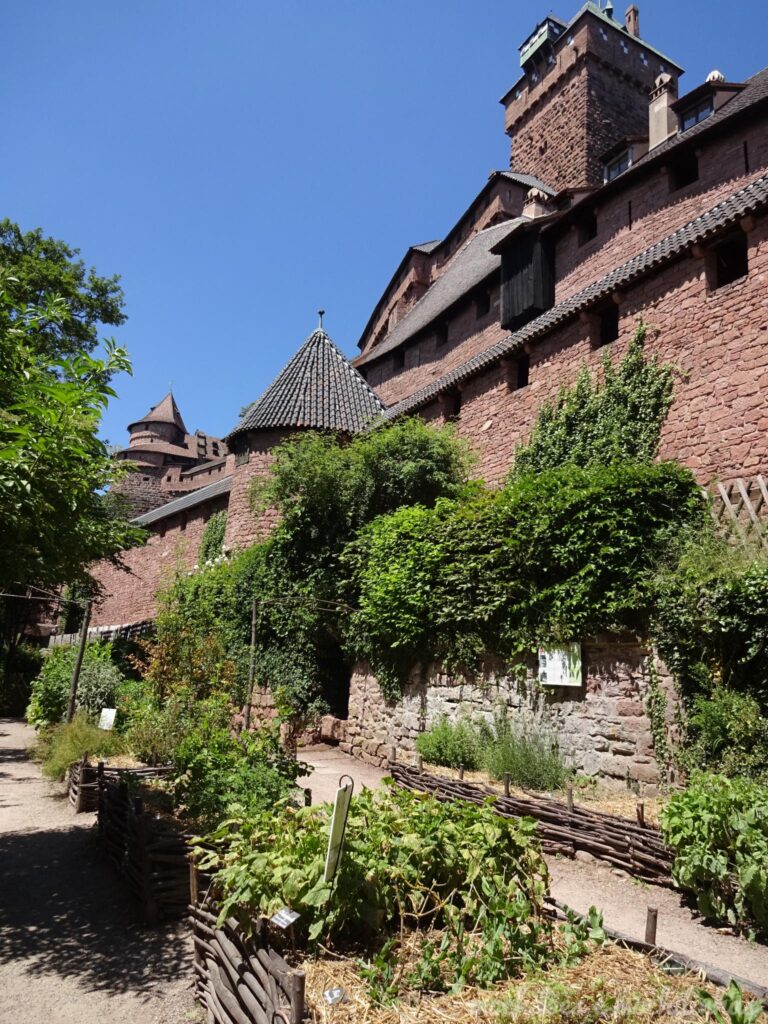

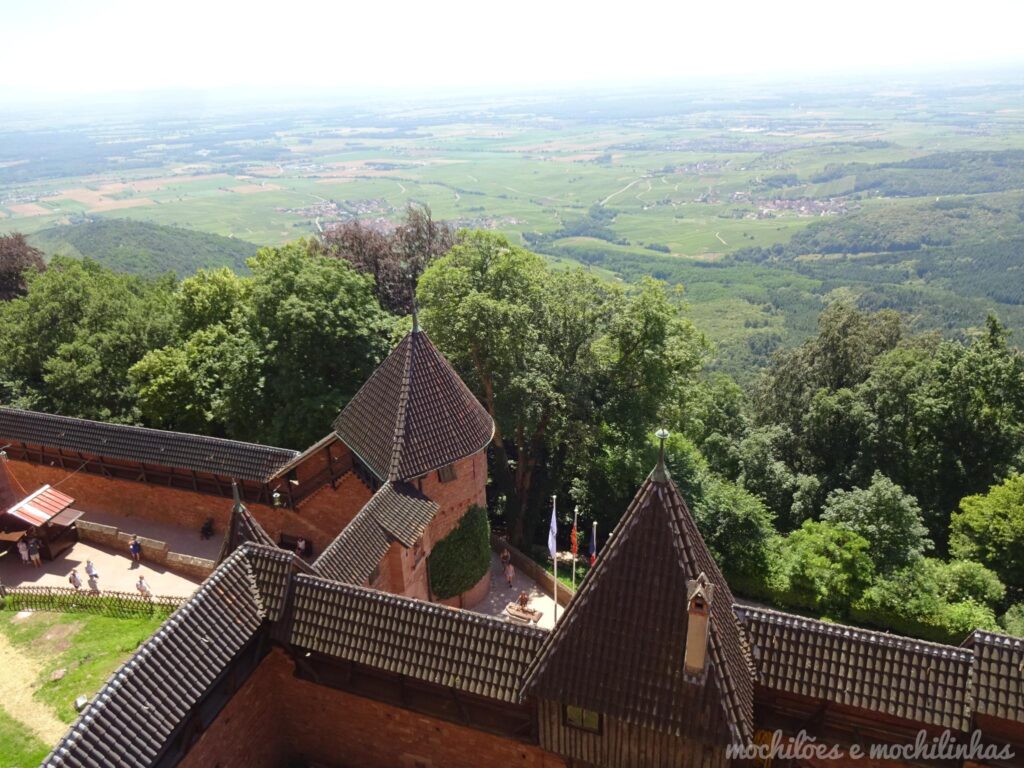

Strasbourg
We drove a little further and finally got to know the city of Strasbourg, which is currently home to the European Parliament and the headquarters of the Council of Europe. In addition to its political importance, the city is famous for its wonderful gothic cathedral, built in the 12th century and completed in 1439. Its tower is 142m high and is the tallest medieval building in the world. Its stained glass windows are from the 12th century and its clock is from the 16th century, and if you are inside at 12:31, you will see the figures on the clock acting out the Passion of the Christ. We didn't get to see it...
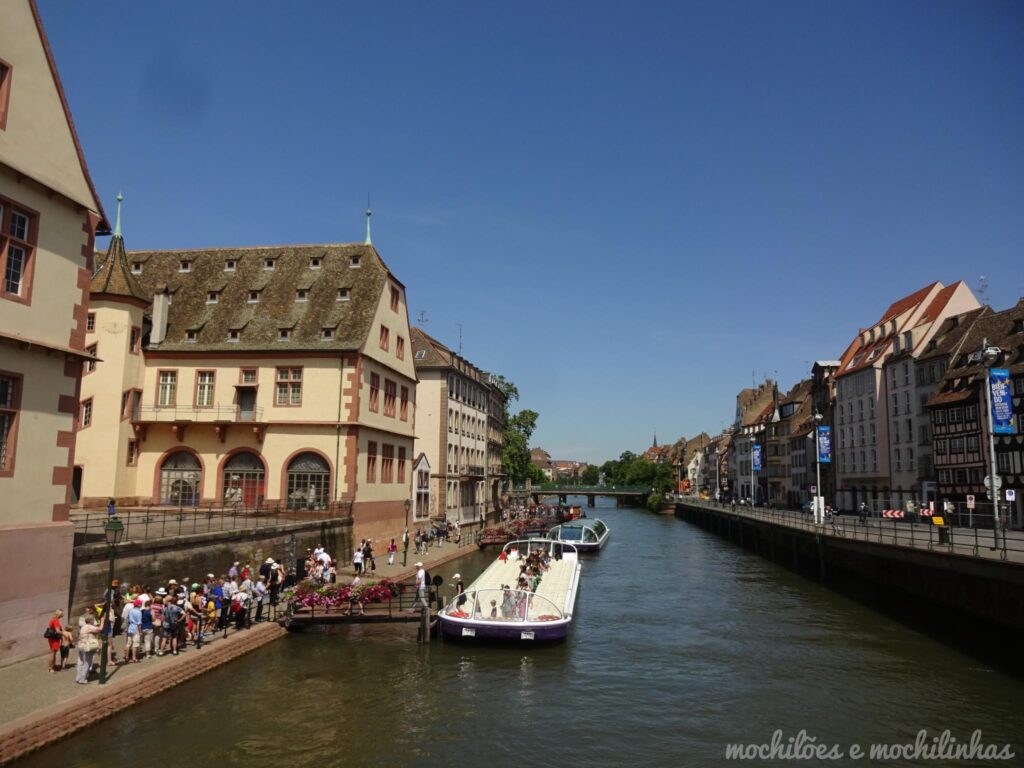
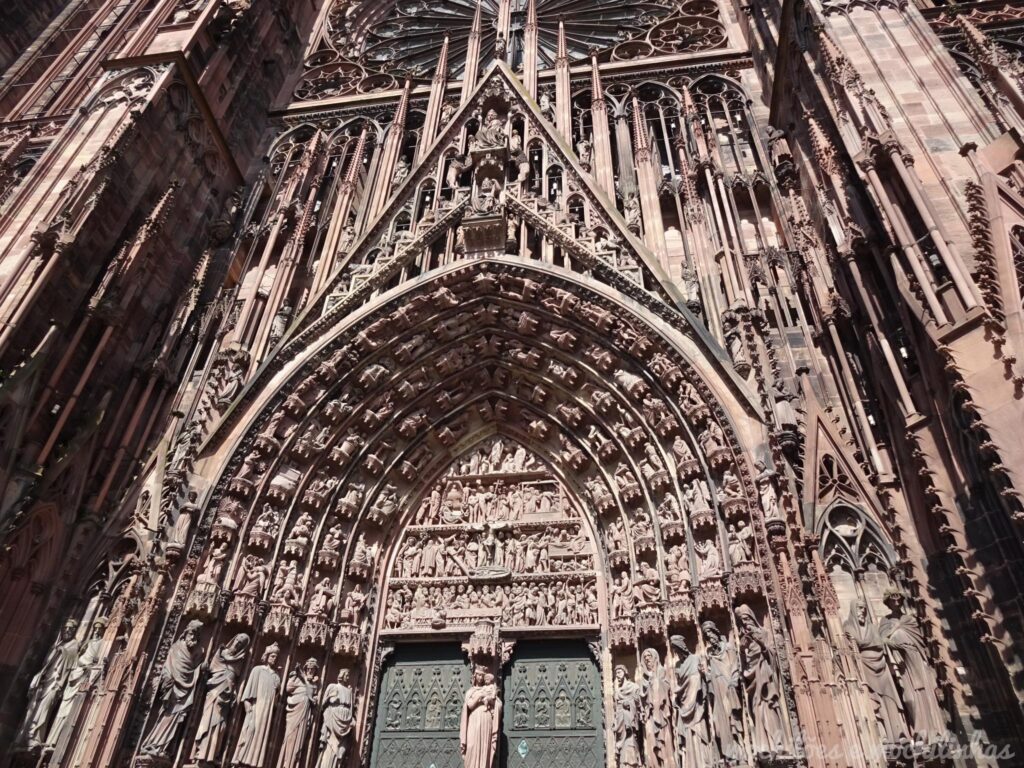
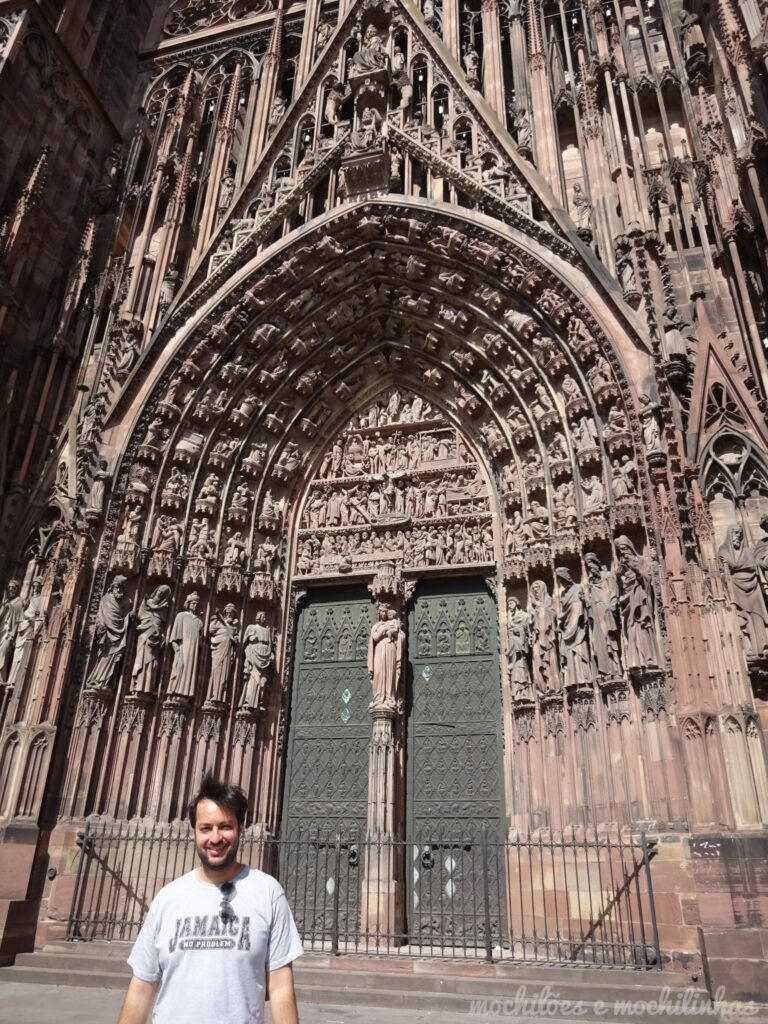


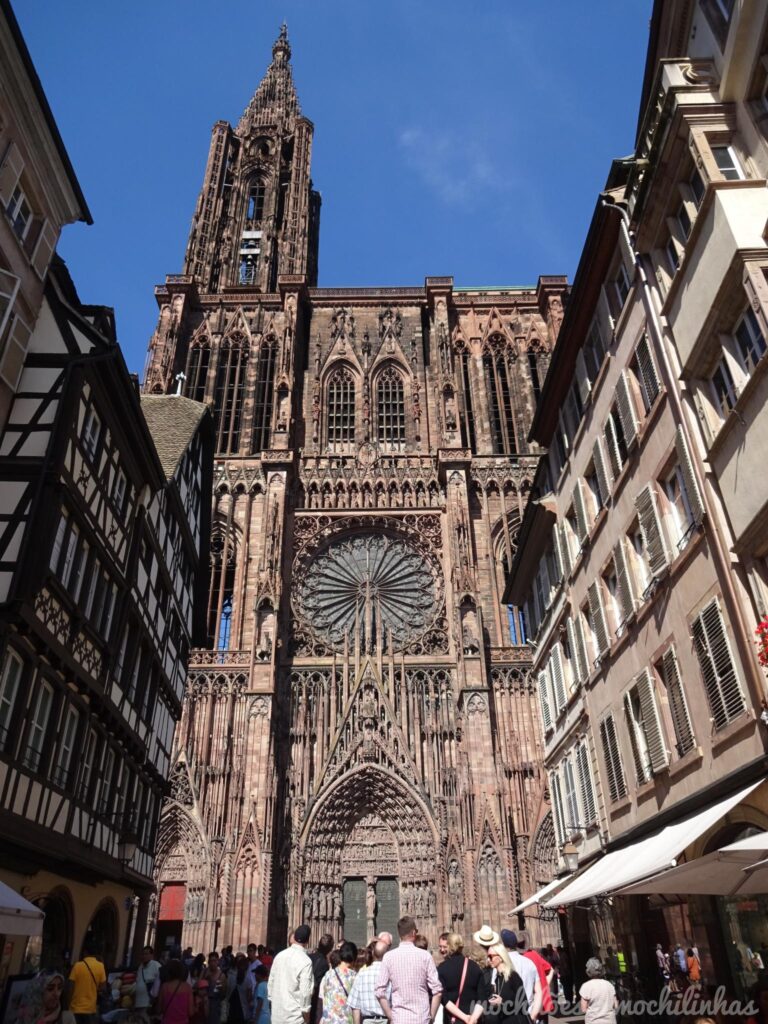
We stopped for lunch at the restaurant With Crocs P'tits, well rated on TripAdvisor and to change things up a bit, we ordered a local beer and a meat with salad for two people, plus a cheesecake. Everything delicious!
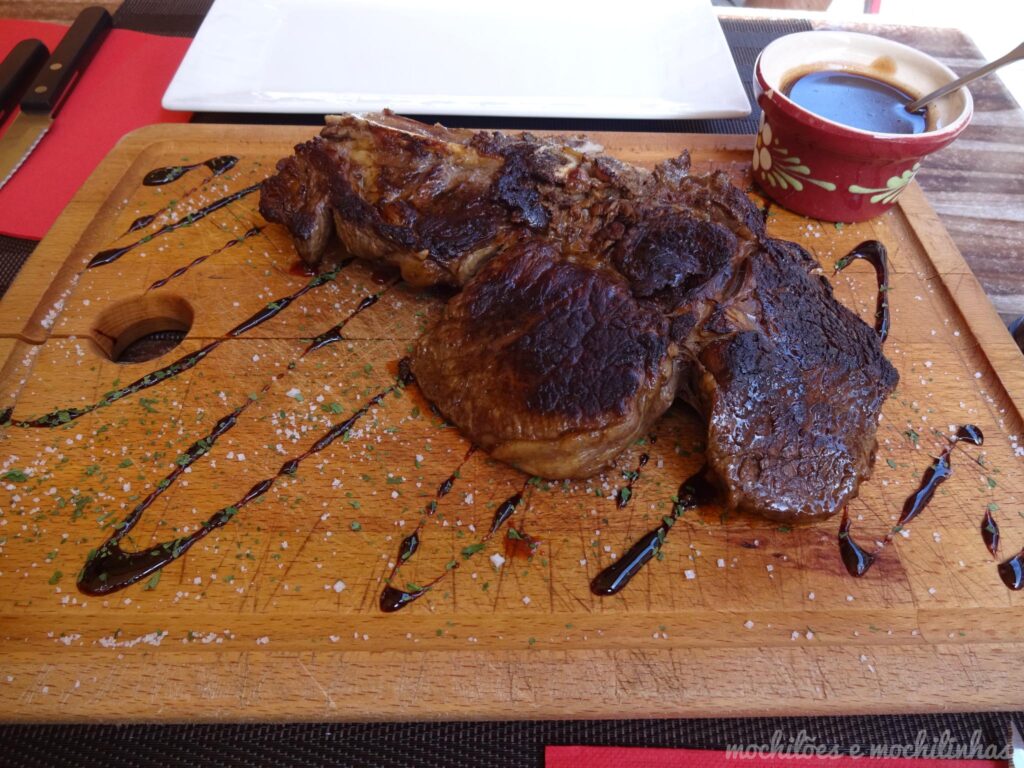
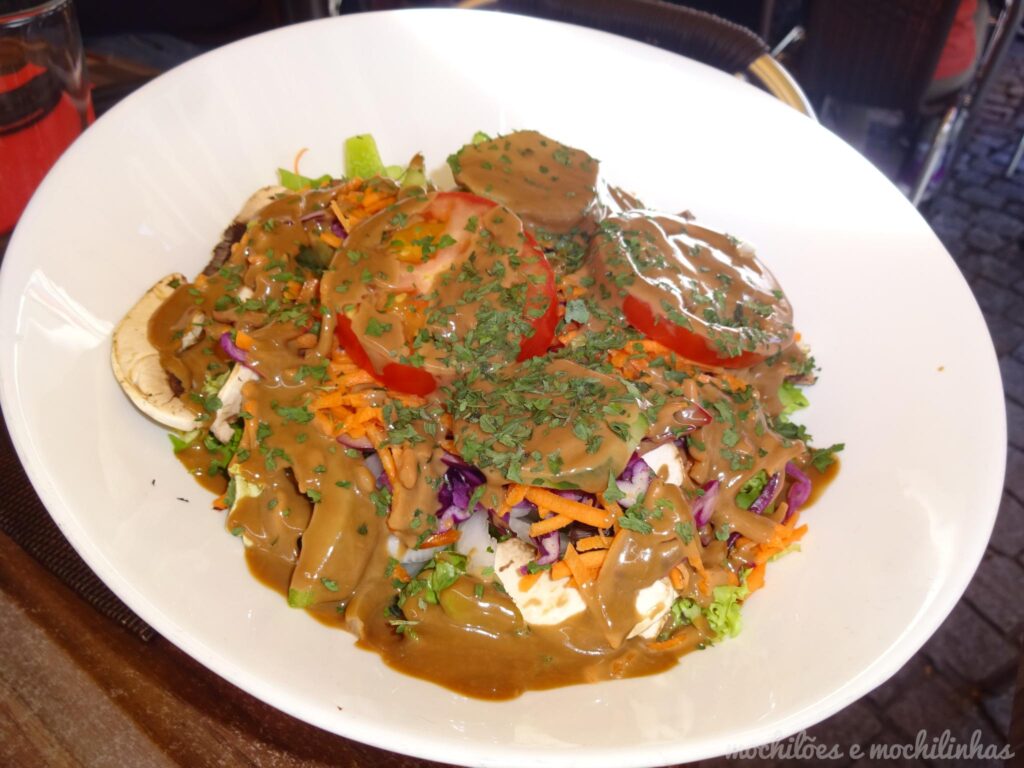
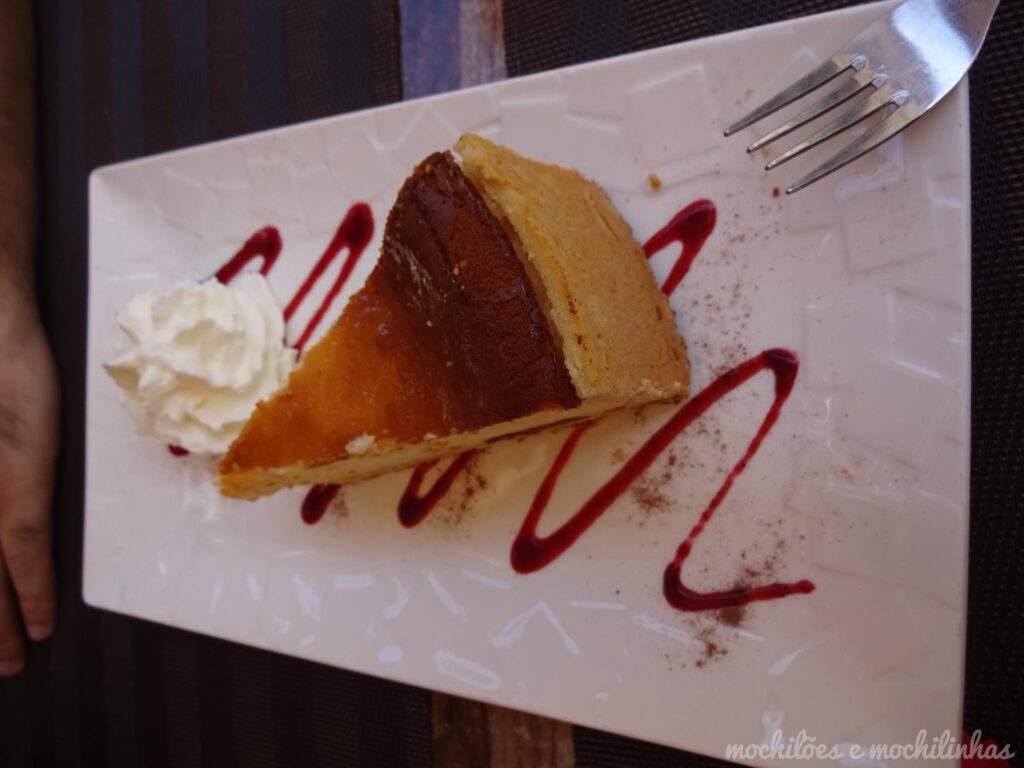
We walked through the streets without rushing with the sun on our heads and so we had to stop in some places to cool off. We tried to do the batorama tour through the canals, but when we went to buy, there were only places on closed boats.
I could see myself feeling sick from the heat and in a bad mood with the ugly landscapes because of the dirty glass and metal. I couldn't face it. If I had known they would sell out like that, I would have bought them as soon as we arrived in the city, so here's a tip! The only way was to do everything on foot, which was also very nice, but certainly more tiring.
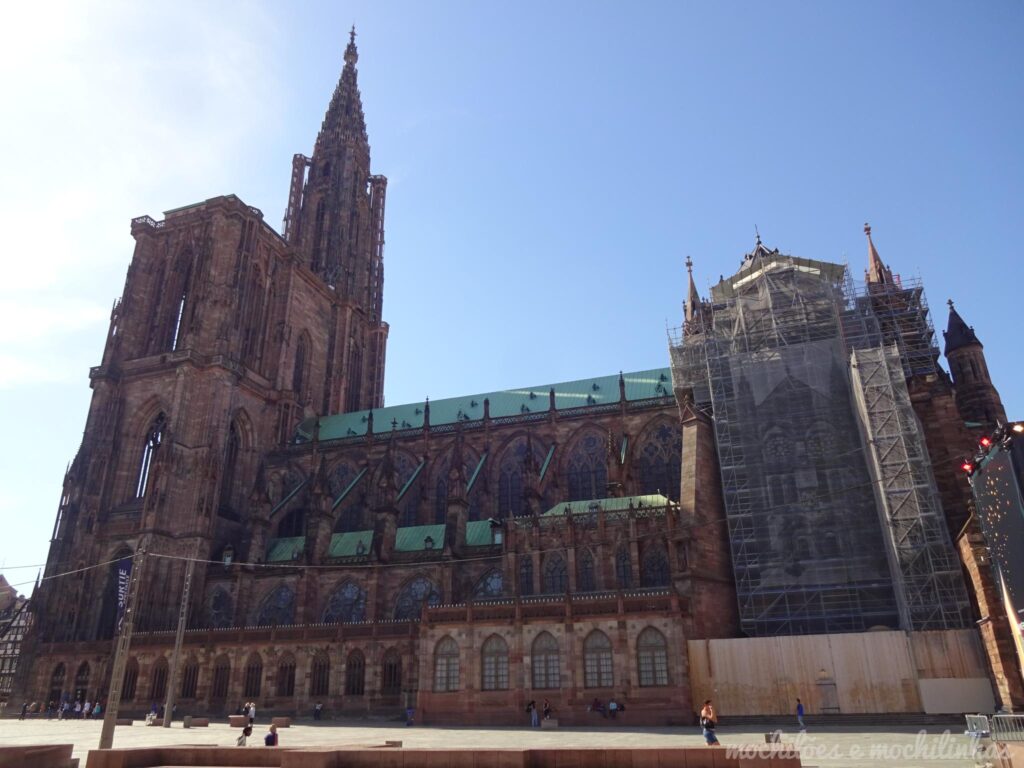
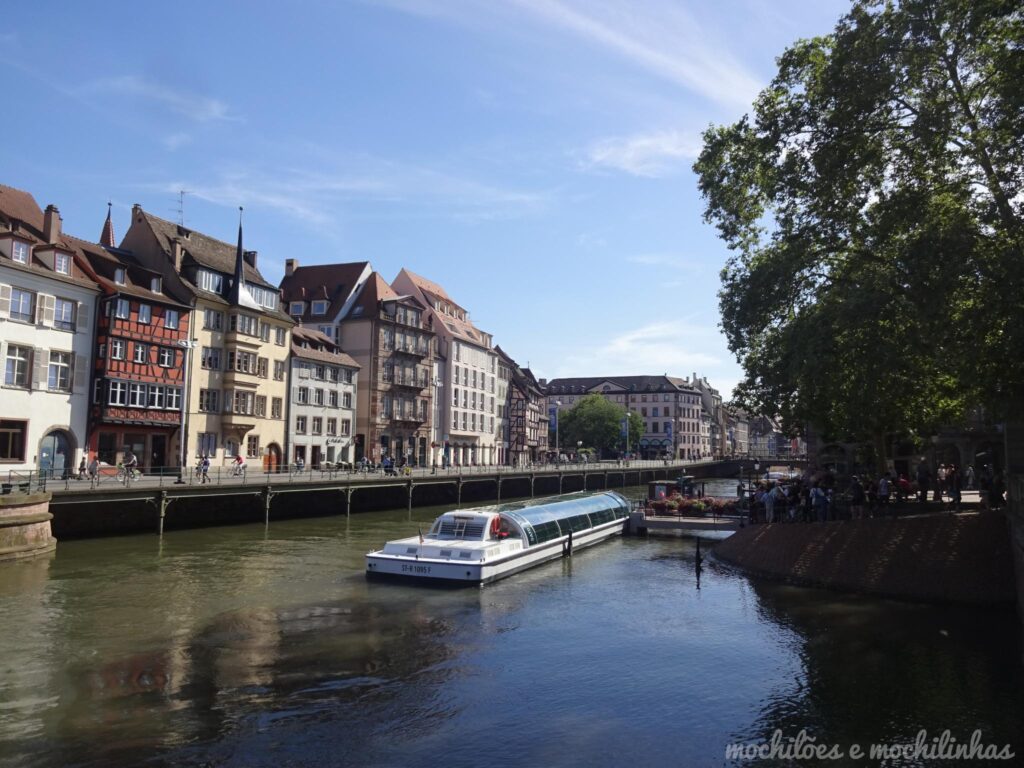



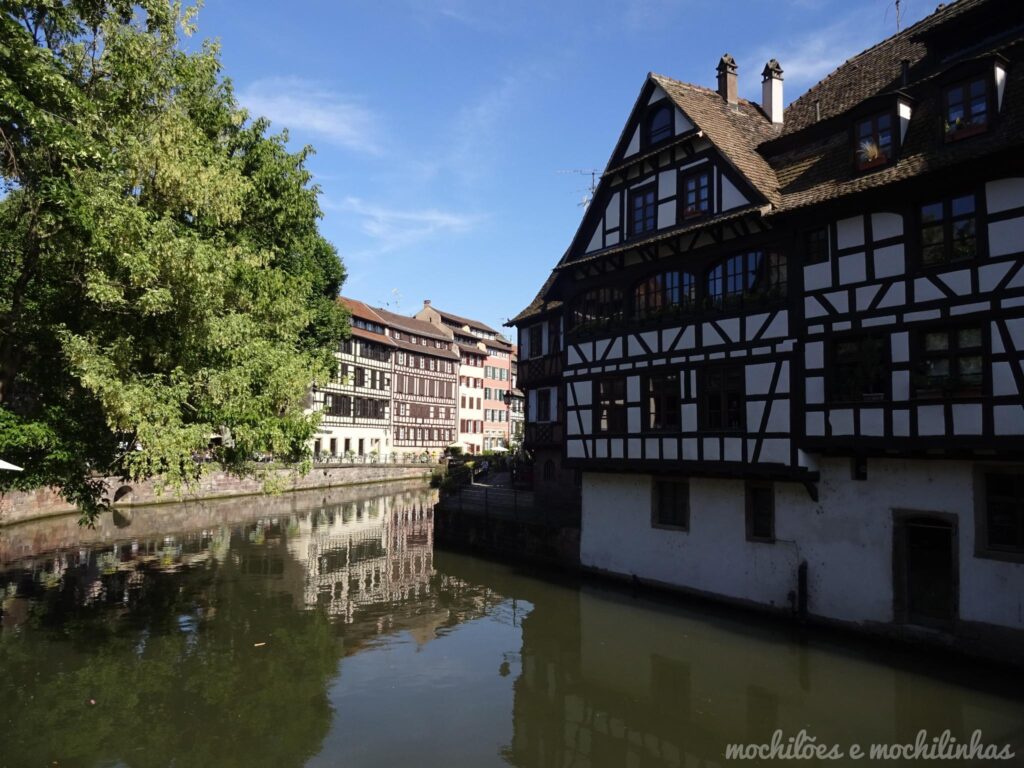
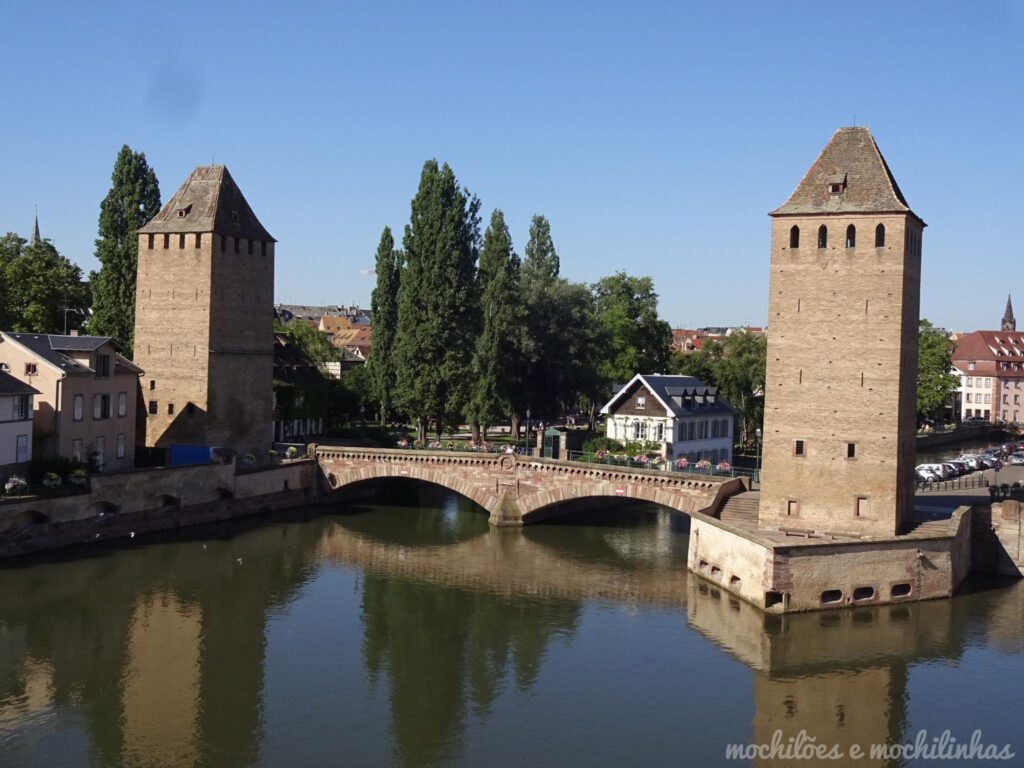
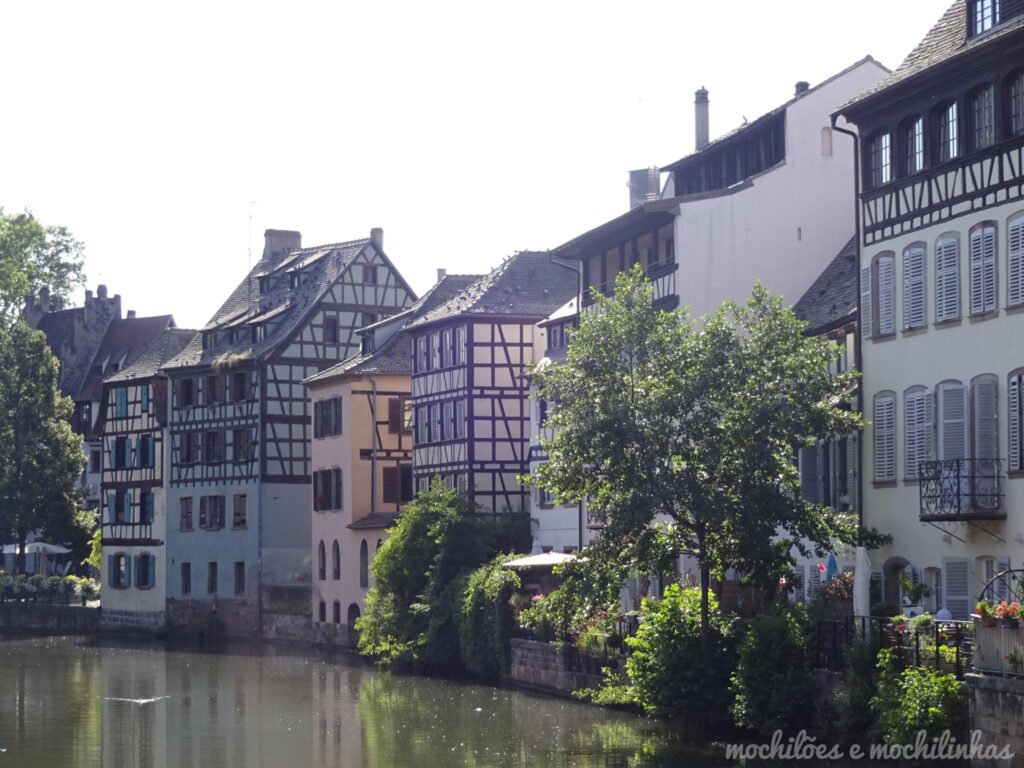
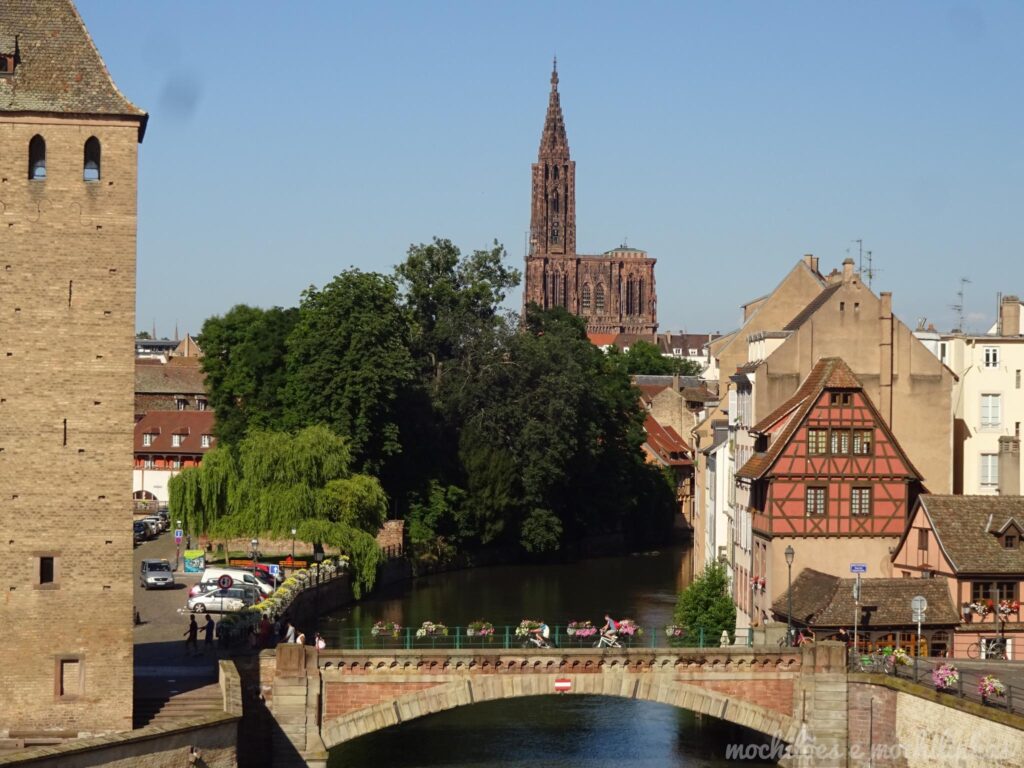
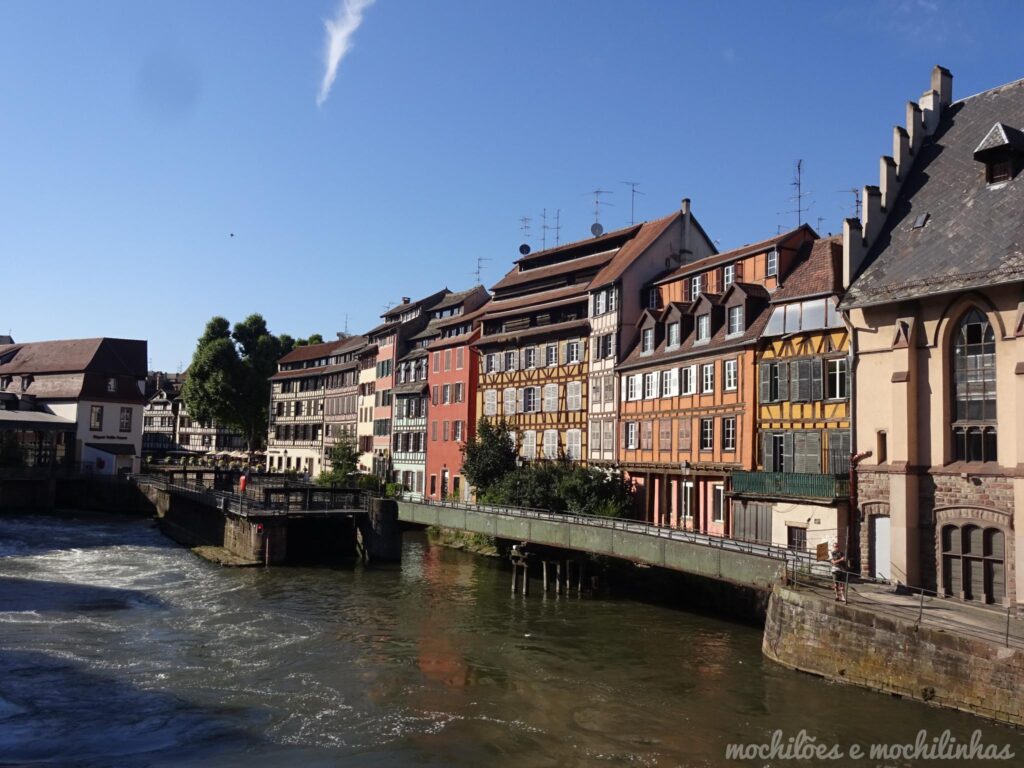
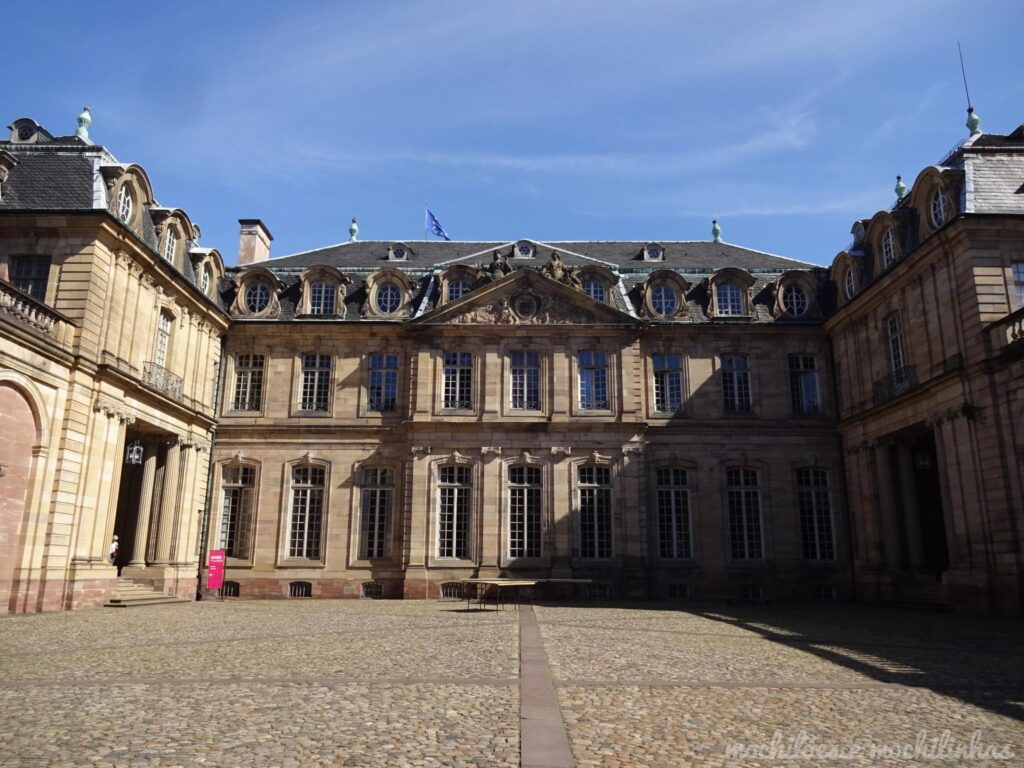
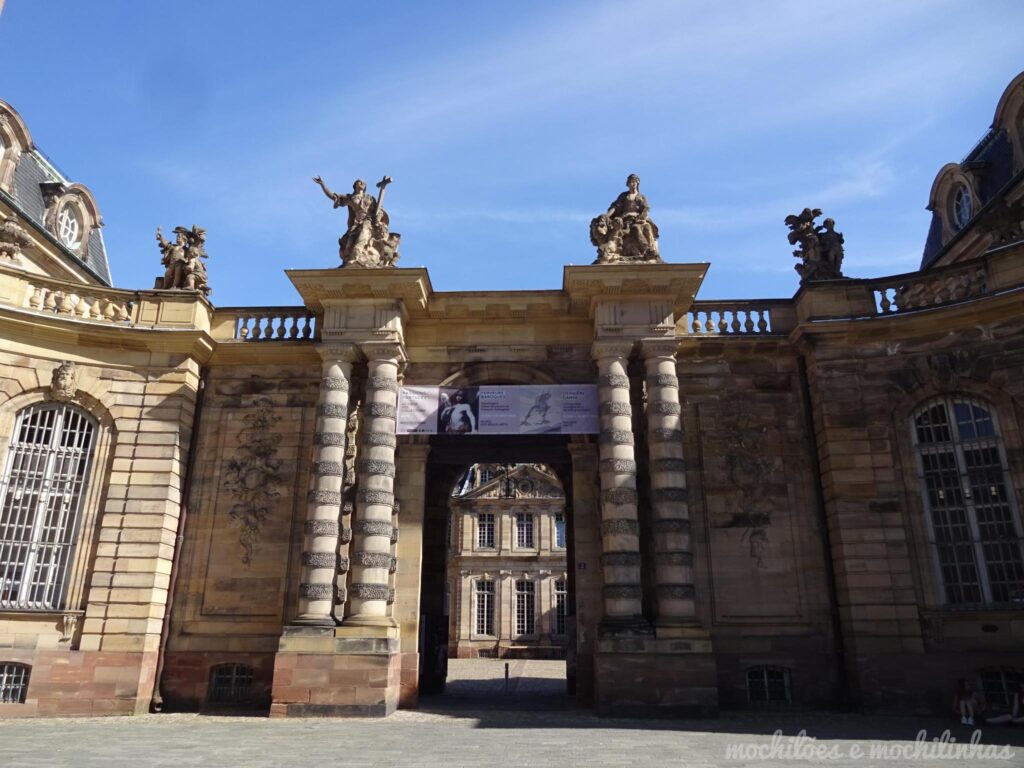
We stopped at a supermarket to make sure we had dinner and then hit the road to our hotel in Colmar. Nothing like brioches, cheeses and wines in an air-conditioned room to end the day. We missed one chandelier of white chocolate to complete the party. <3
The next day, we left the region and went to Luxembourg. I talked more about our trip there in this post. That was the summary of Alsace. Did you like it? Do you want to share any tips? Send us a message or leave a comment below.
ALL POSTS FROM THIS TRIP
- Read the summary of our trip here: 9 days traveling through France and Luxembourg.
- Read about our trip to Burgundy: NodeThis 4-day itinerary in Burgundy
- Read about our trip through Alsace: 2 and a half days in Alsace
- Read about our trip to Luxembourg: An afternoon in Luxembourg
- Read about our trip to Verdun: A morning in Verdun
- Read about our trip to Champagne: 1 day and a half in Champagne




